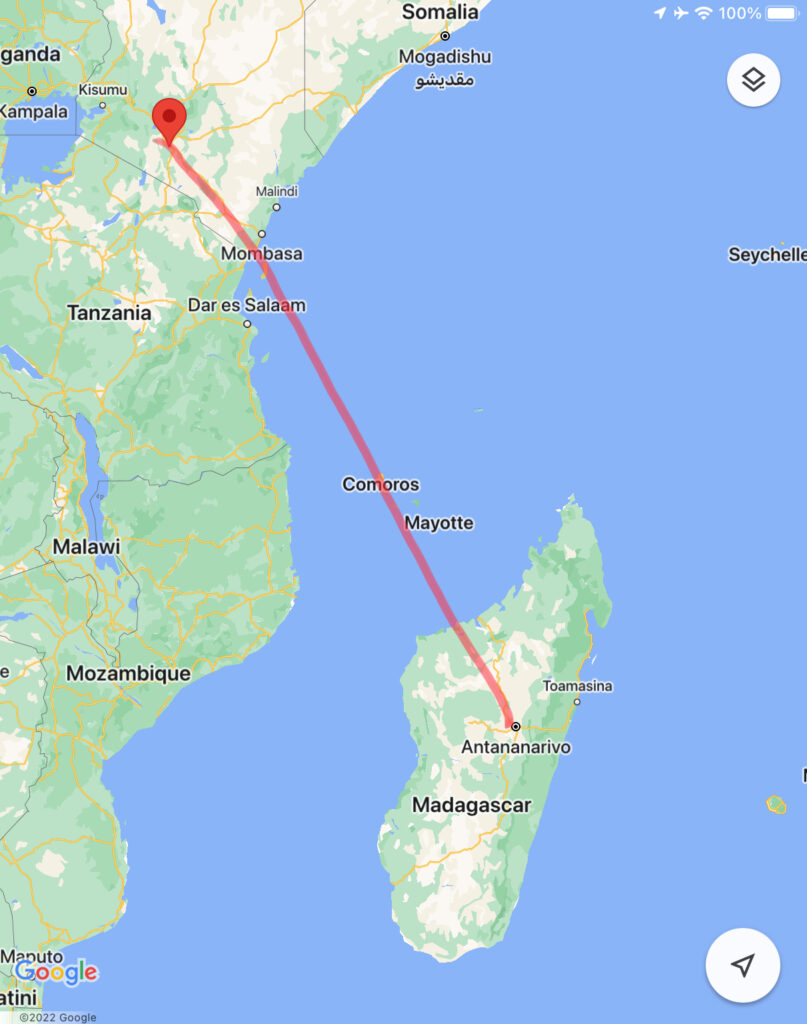I started this GoFundMe page to help the Kenyan village that we visited during our recent trip to Africa. The village water pump broke and now the women must walk 2 miles carrying 50 pounds of water. If you are able, please contribute and/or share this post to get the pump fixed. Thank you!
November 11, 2022 Amboseli, Kenya to Zanzibar, Tanzania
We were up early to catch our 7:40 flight. Another great view of the mountain this morning. We were on our way to the airport when they radioed Joseph that we had left medicine in the tent. In the tent we had to put food and medicine inside a chest in case the monkeys got in. Although we had checked the tent for stuff we missed, we forgot to check the chest. Someone from the camp drove like a bat out of hell and delivered the stuff before our plane had even landed. All’s well that ends well. Here’s a picture of us with Joseph. we will miss him.
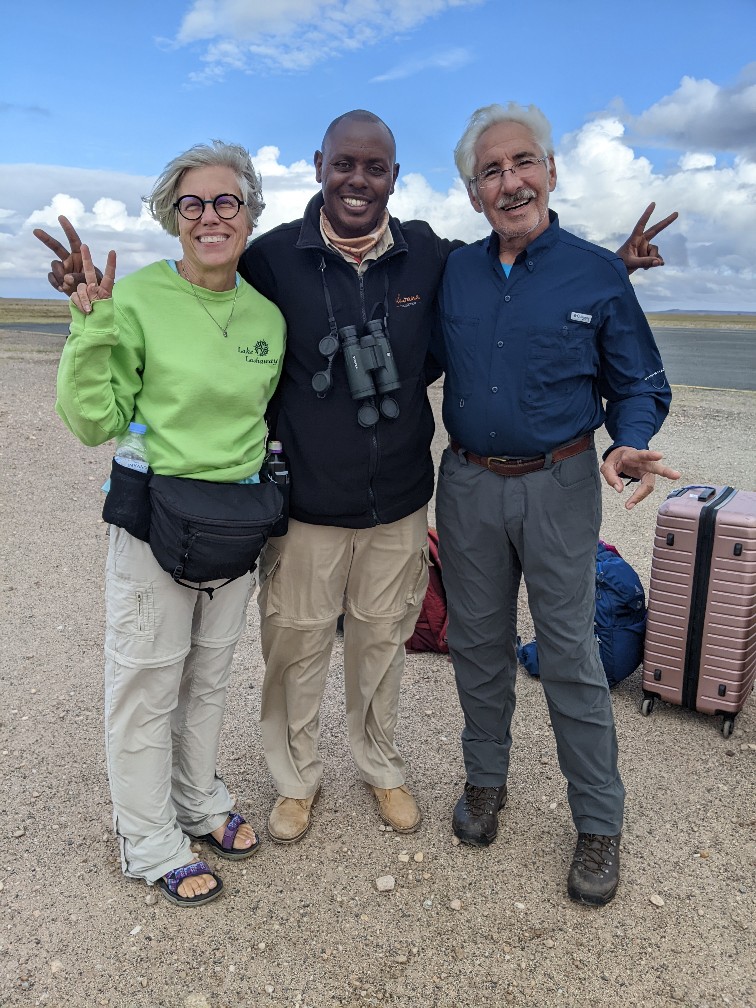
We made one stop and then flew to Nairobi.
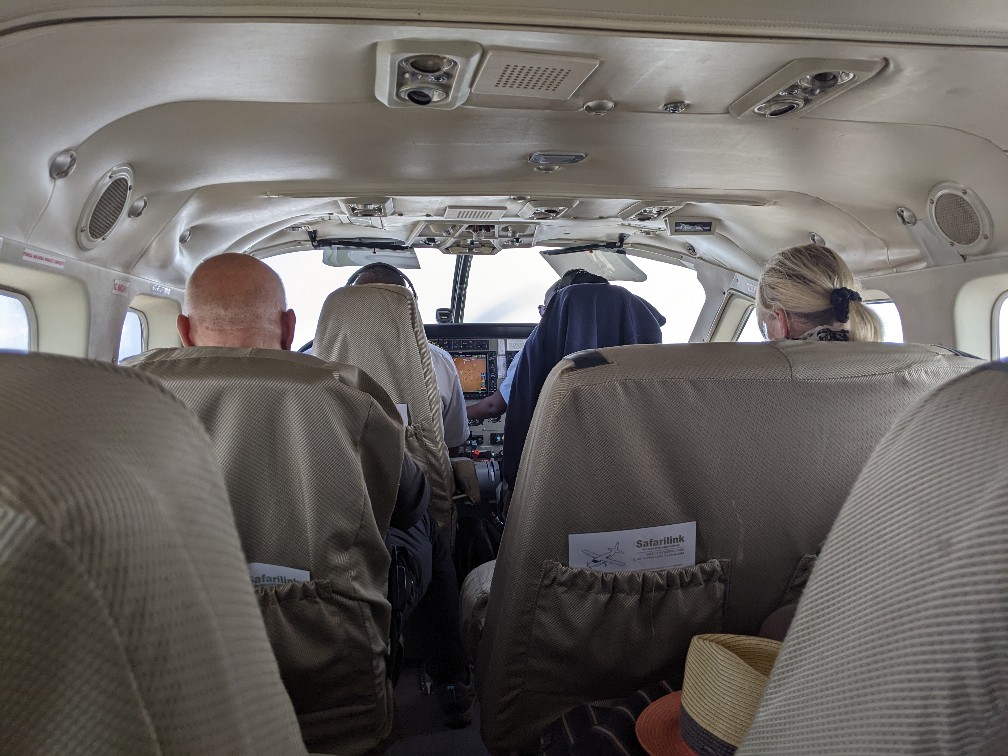
We were picked up by Lydiah and William and driven to the Giraffe Center. This is part of the Giraffe Manor, a small hotel were the giraffes stick their head through the window and share breakfast with you. I fed the giraffes (Rick wasn’t so interested in feeding the giraffes).

Then we went to the elephant orphanage for feeding time.
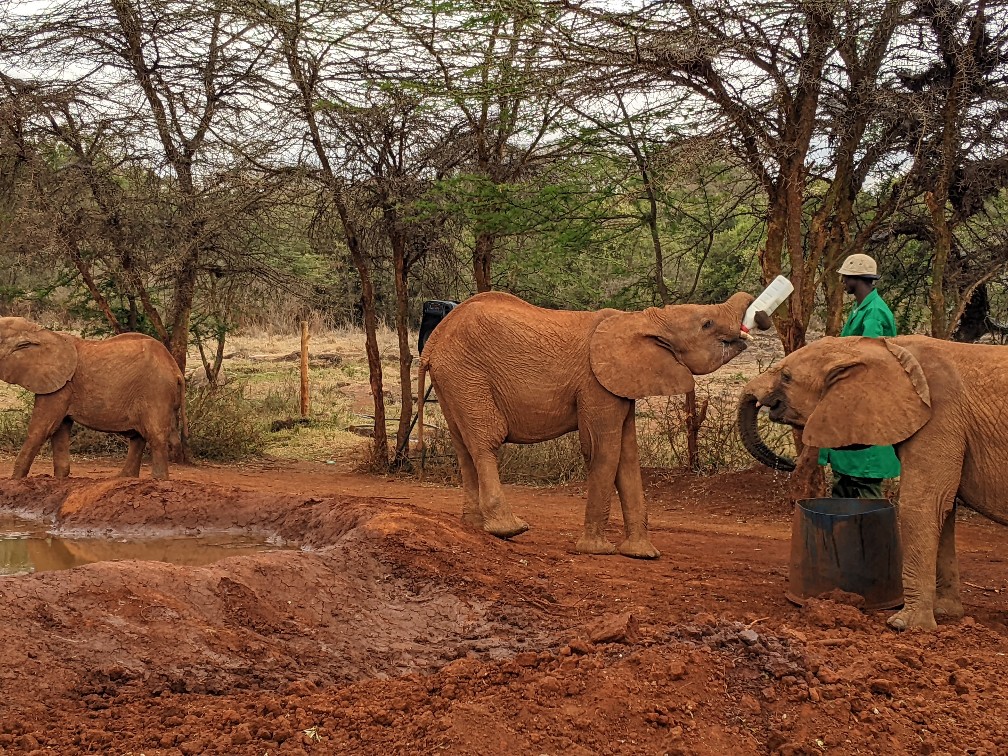
After these two stops we needed to return to the airport for our flight to Zanzibar. It was a slightly bigger plane this time.
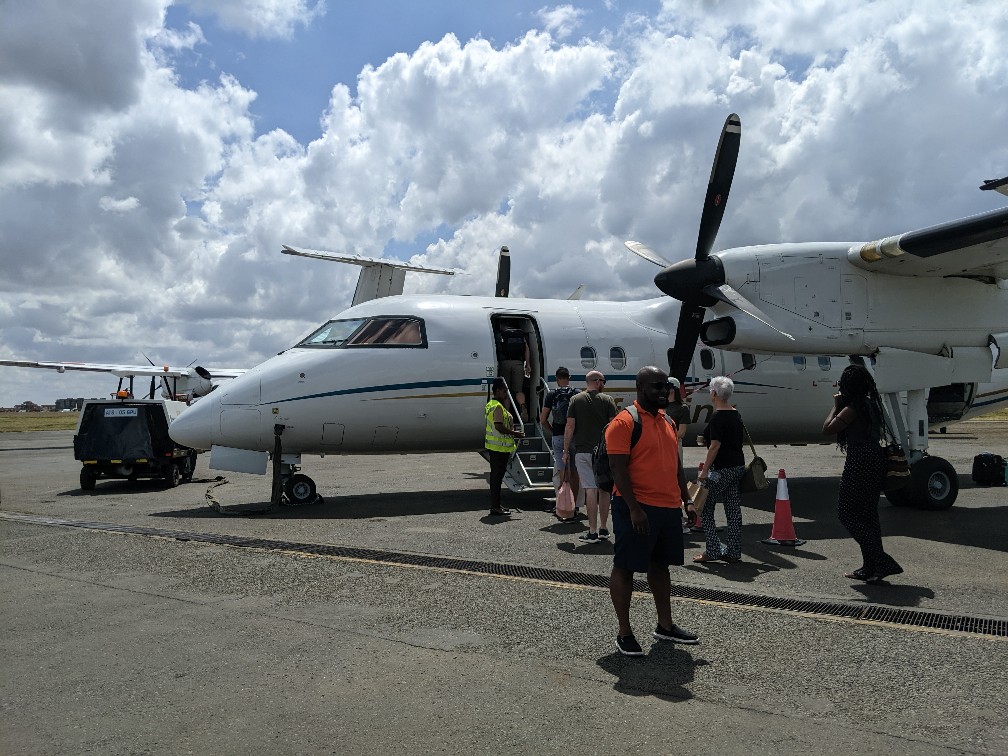
The flight from Nairobi was about an hour and a half and we arrived in Zanzibar around 3:30. We were met by our guide, Ali, and our driver, Suleiman and taken to our hotel which is right on the edge of Stone Town, the main city.
On our drive we learned that Zanzibar is an archipelago which includes two large islands, Unguja (population ~1.3 million) and Pemba (population ~600k). We are staying in Stone Town which is on Unguja. Zanzibar is part of Tanzania but is governed fairly autonomously and they have their own president. 1.8 million people live here. The islands facilitated trade between Africa and Europe and Asia so they were ripe for colonization. In the early 1500s, Zanzibar became part of the Portuguese empire. At the end of the 17th century, the Portuguese were kicked out and Oman took over. It was under the Omani rule that Zanzibar became a hub for the slave trade to the Middle East. Eventually, the British took over the nation in an effort to abolish the slave trade. Zanzibar was granted its independence in 1963 and it merged with Tanganyika in 1964 to become Tanzania. This is a long way of say that Zanzibar has many European and Middle Eastern influences. The Arab influence seems to be the strongest. The population is 95% muslin.
We arrive at the hotel which is right on the water.
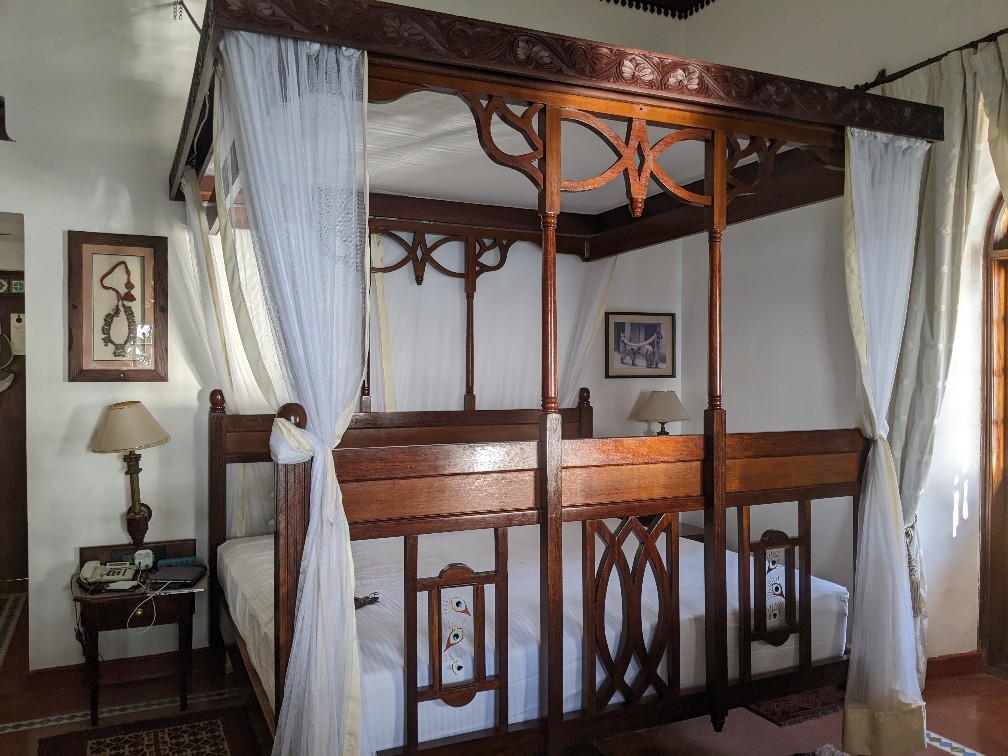
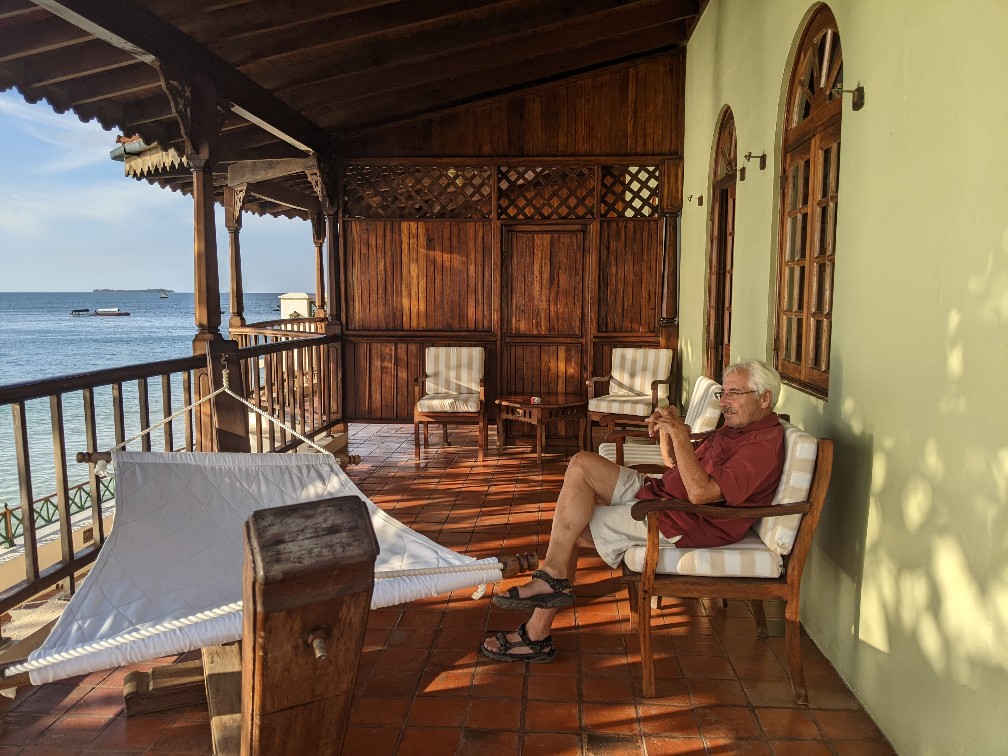
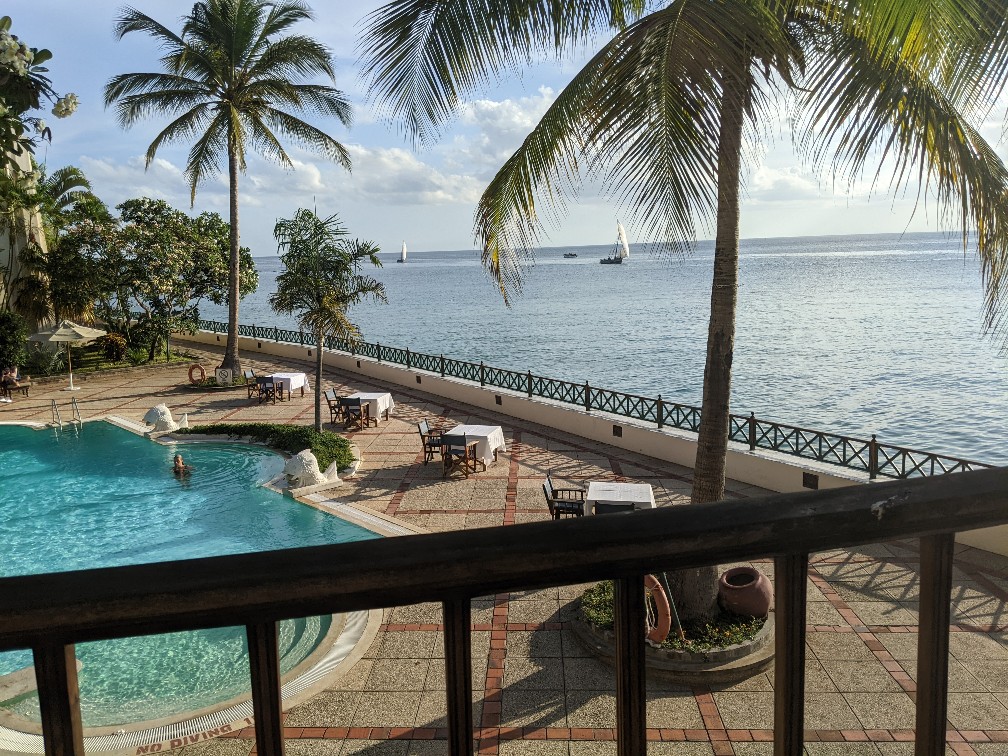
After getting settled we walked a little and had a drink at a beach bar. There we met a nice man who works in the embassy in Addis Ababa. We got a lesson on the war in Ethiopia and where to go when we visit.
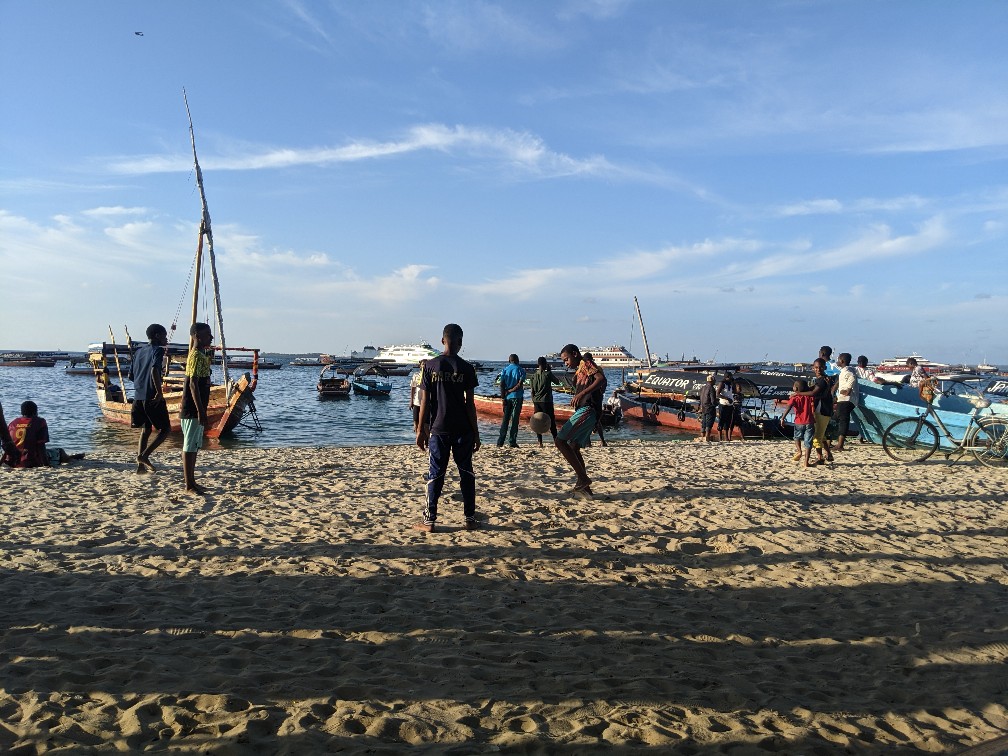
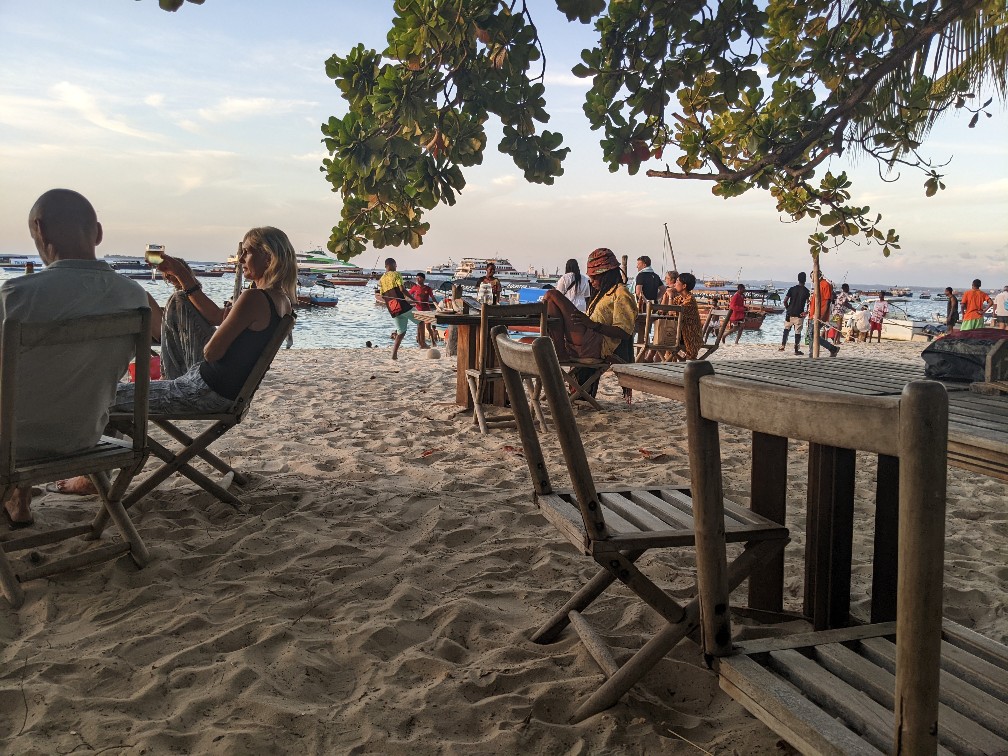
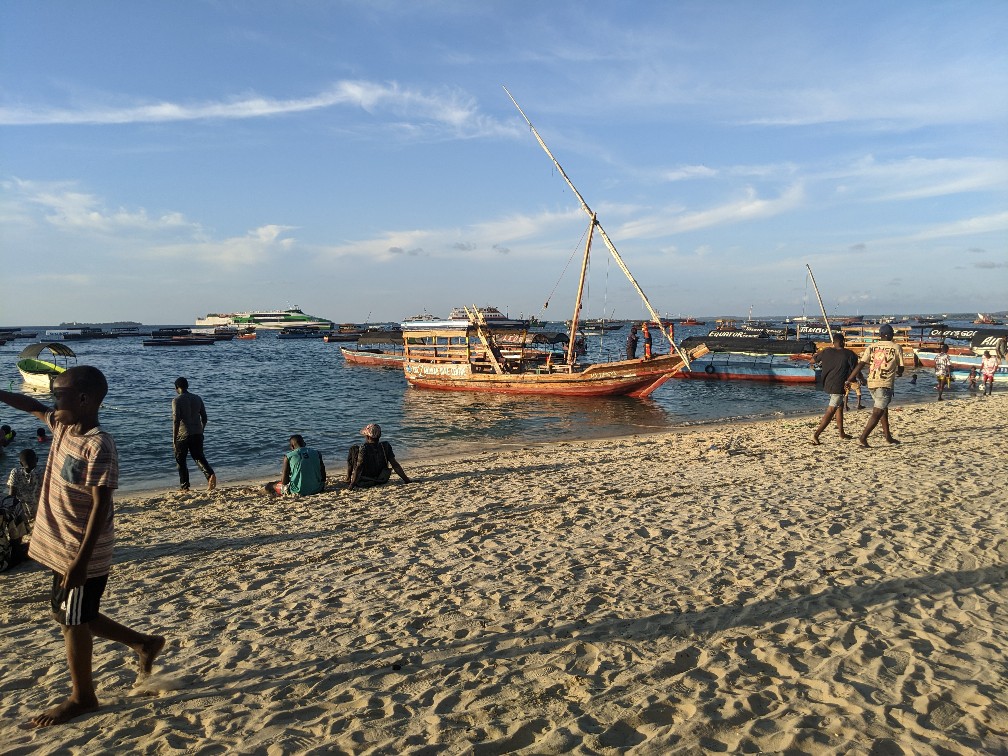
We returned to the hotel for dinner which was incredibly slow and not that great.
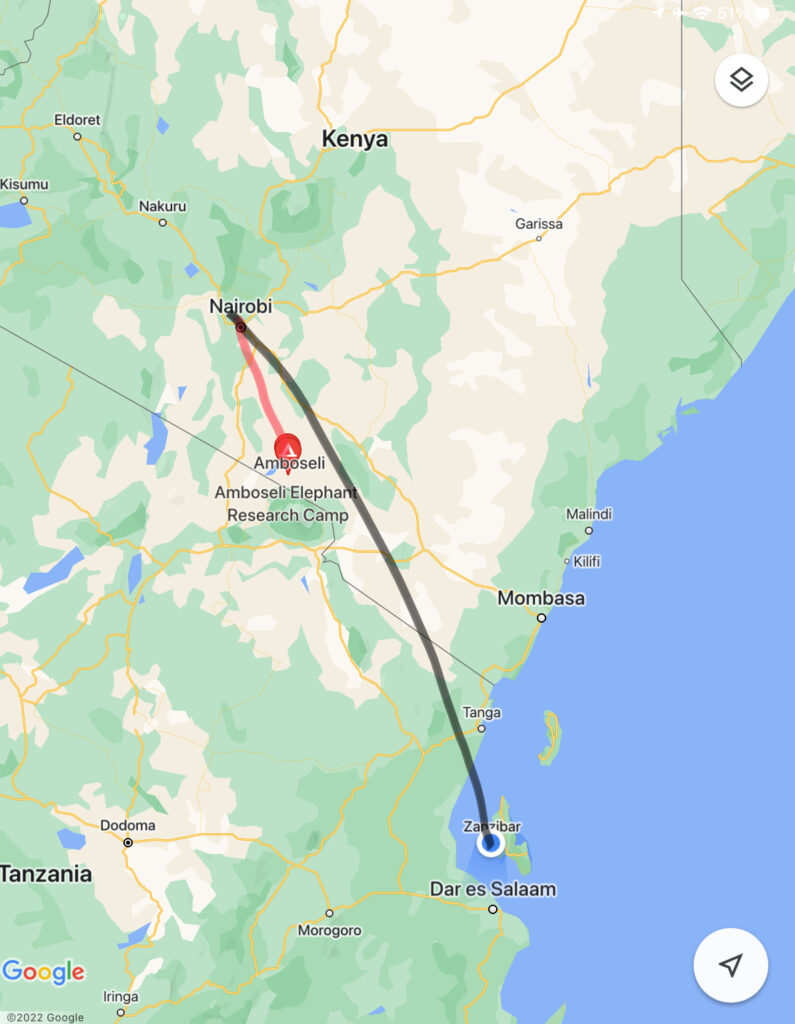
November 10, 2022 Amboseli, Kenya
We started our day with an early morning game drive. Kilimanjaro was clear of clouds. We went back to the lions. The lioness had made another kill. She is definitely teaching her cubs to hunt. One of the cubs was interested and the other was not. We also saw lots of elephants.
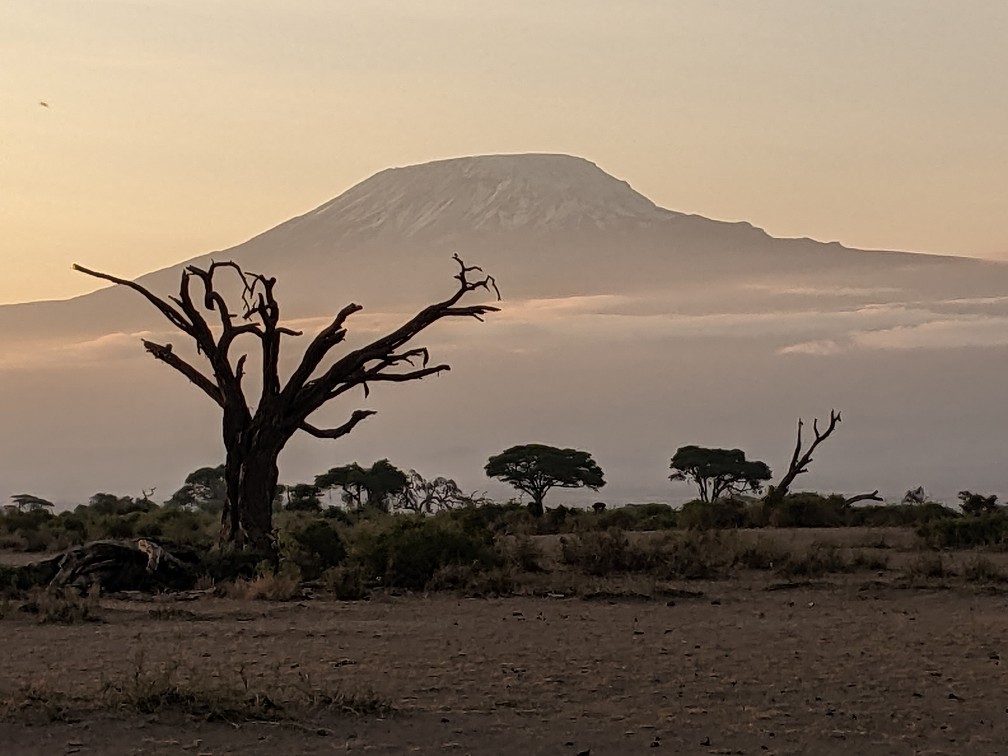
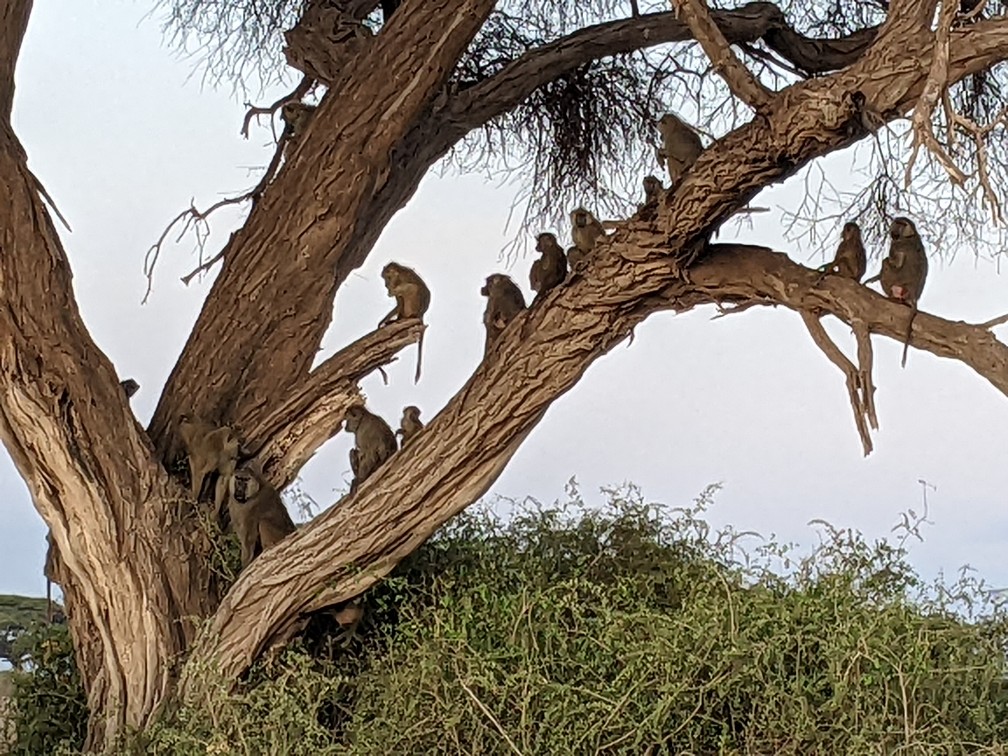
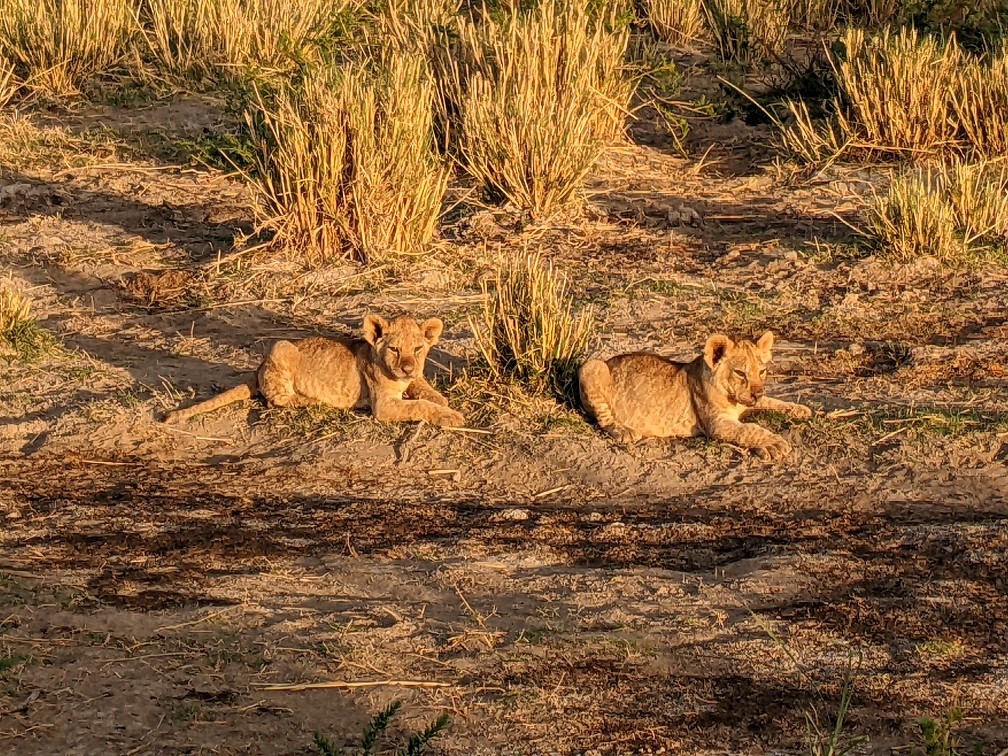
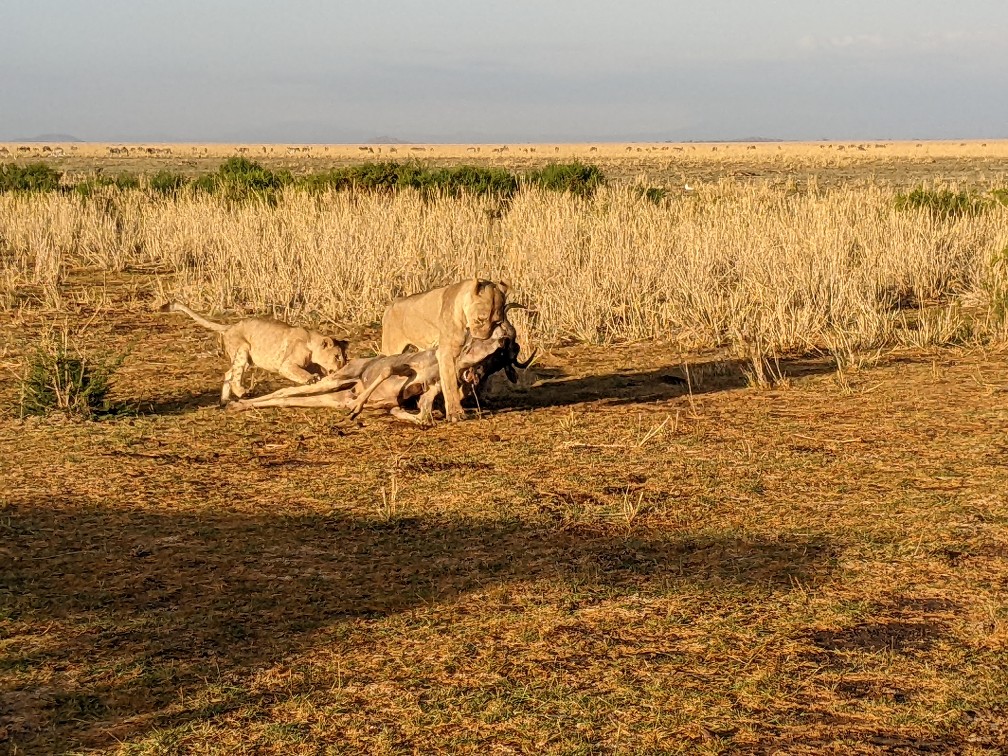


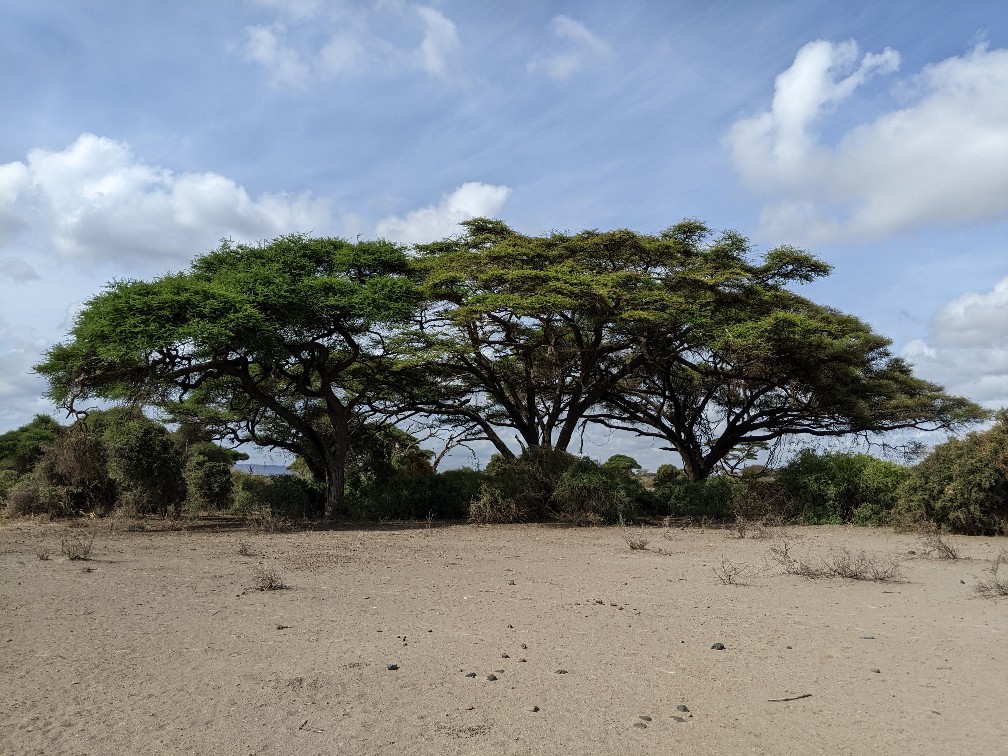
At around 8am, we pulled up to an acacia tree and the camp had set up a dining area for our breakfast. We had a lovely breakfast in the bush. Here are some pictures
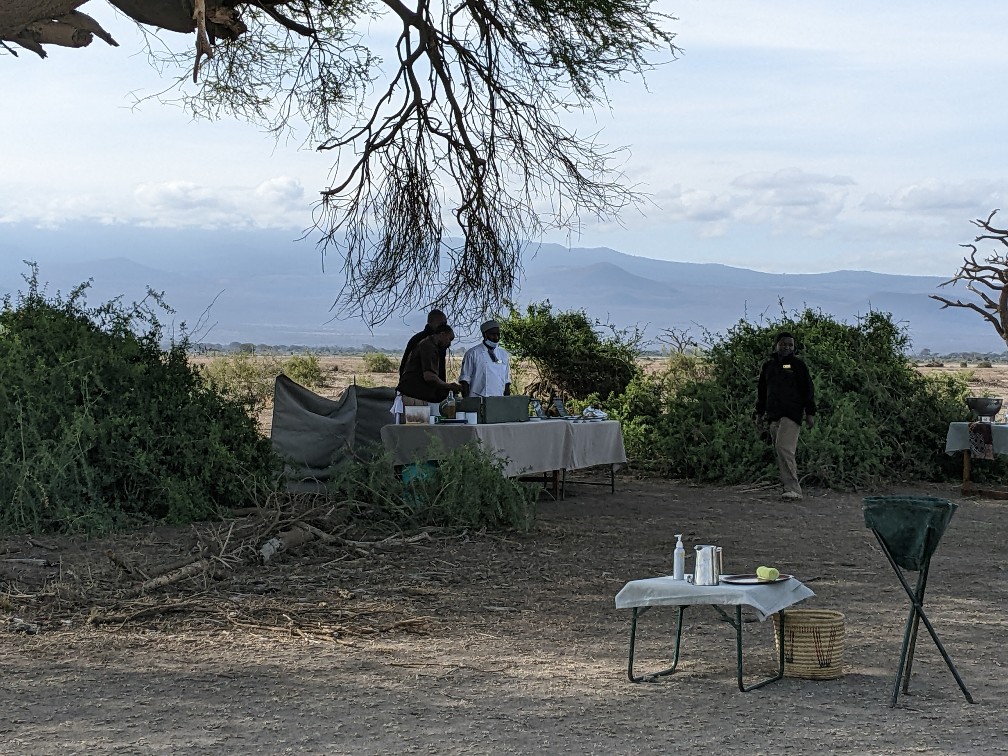
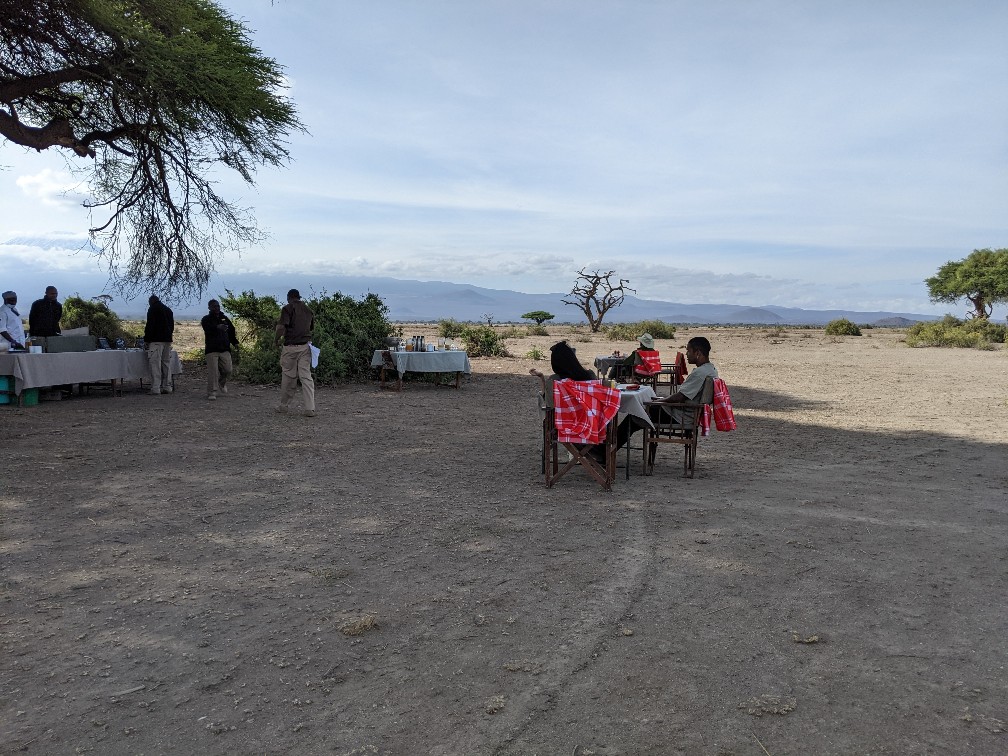
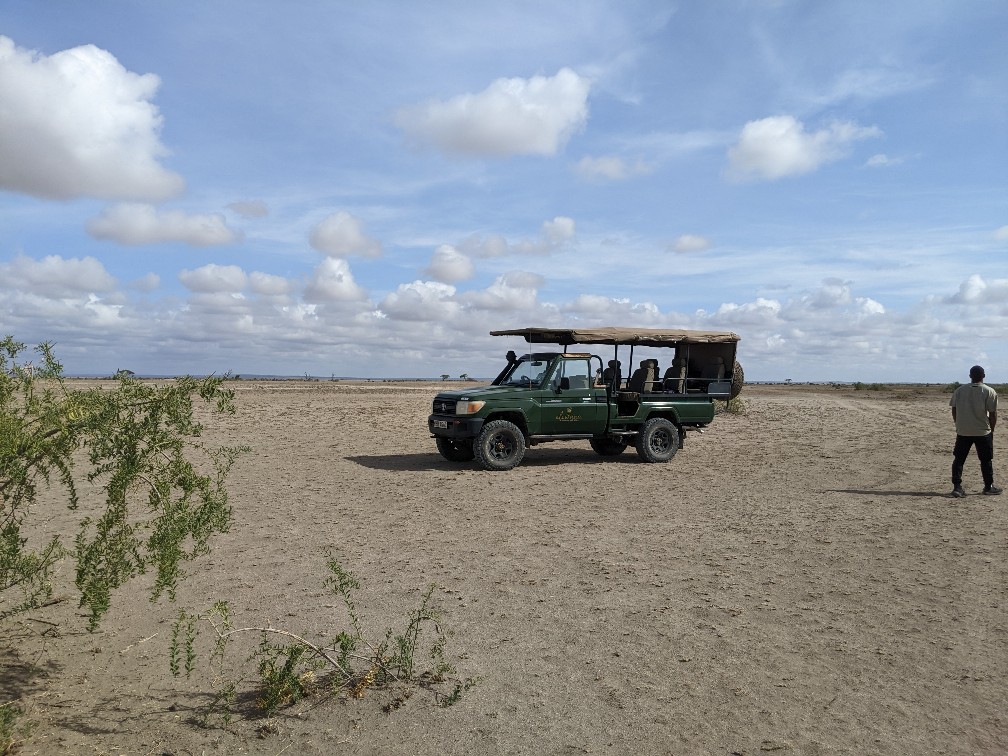
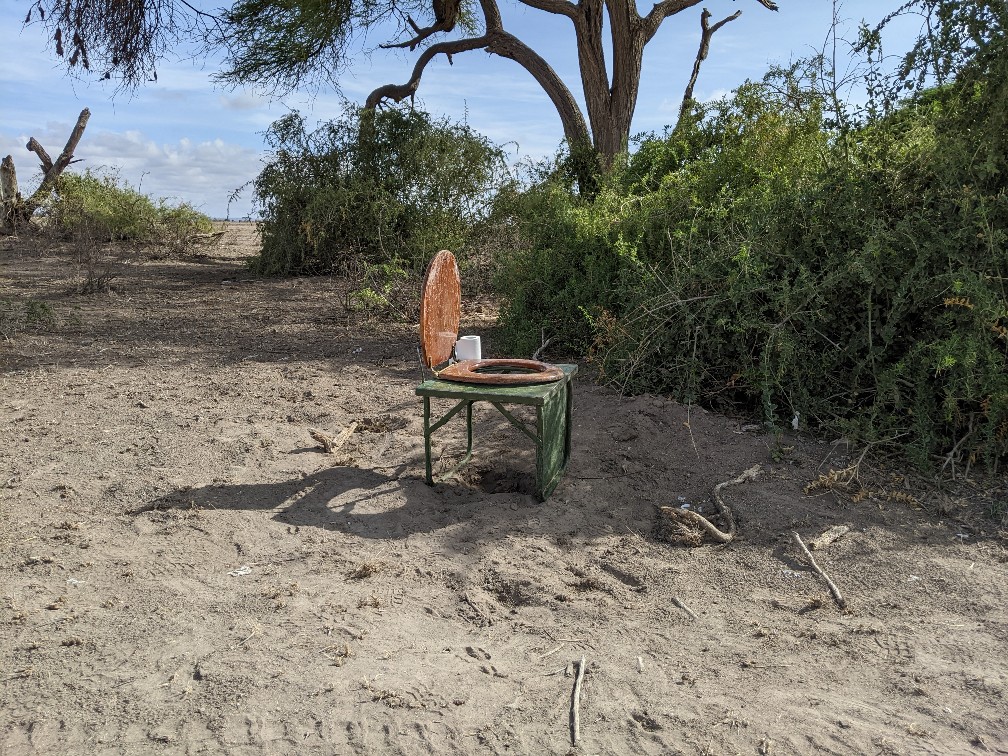
Next stop was a Masai village. There we were greeted by the chief’s son and a que of ladies singing.
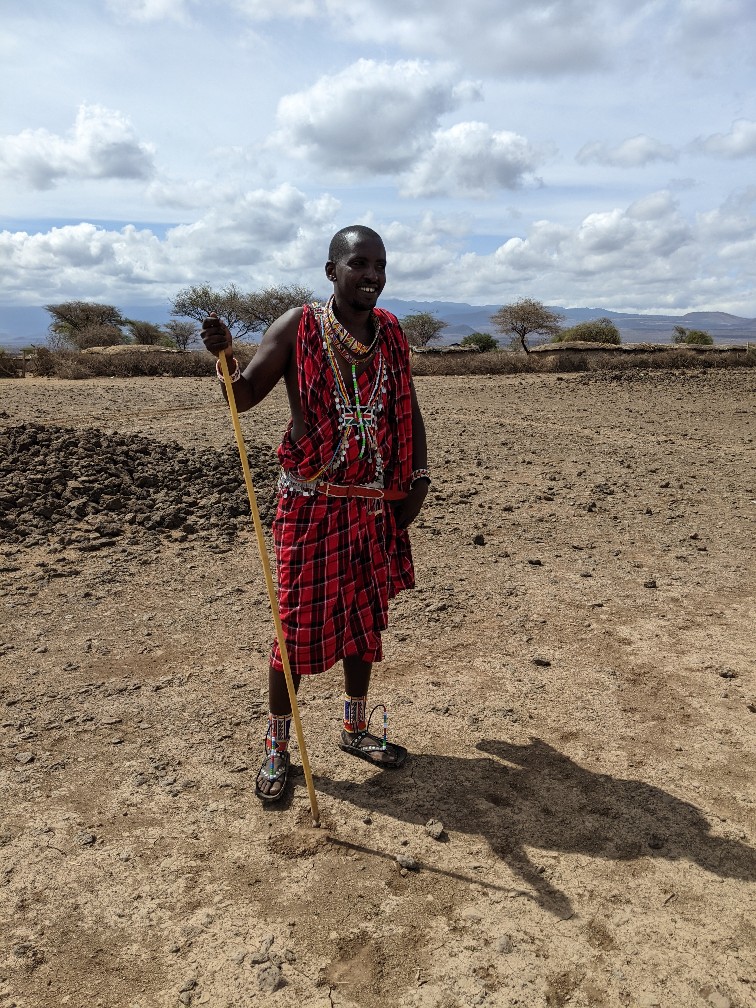
The chief’s son provided a blessing for us and his people. They also showed us how the men start a fire by rubbing to sticks together. They do that in the morning and in the evening. Then the ladies come to get some fire to cook with.
The village housed 4 extended families whose houses were arranged in a circle. There were four gates in the village with one family in each “quarter”.
Masai are herders and do not farm. They only eat meat, no vegetables (my kind of people). The men herd the cows and the women herd the goats and sheep. The men wear red to protect themselves and scare away predators from their cows.
Each mud hut contains two sleeping areas and a cooking area. The parents sleep in one sleeping area and the children sleep in the other. It was much too dark to take pictures inside the hut.
There were some young children around but the older children were at a nearby school that had been built by the camp.
Finally we were taken to “shop.” I bought an overpriced bracelet. While I was shopping, Rick was sitting under a tree. A man who spoke limited English was admiring Rick’s watch ($20 at Walmart). He was looking at it and then touching it and finally Rick asked if he wanted it. He said yes and Rick happily/reluctantly gave up the watch. (Rick ultimately suggested he had been culled from the group, looked like a weak target and was set upon by the Masai warrior in this case, similar to the lioness and the zebra.
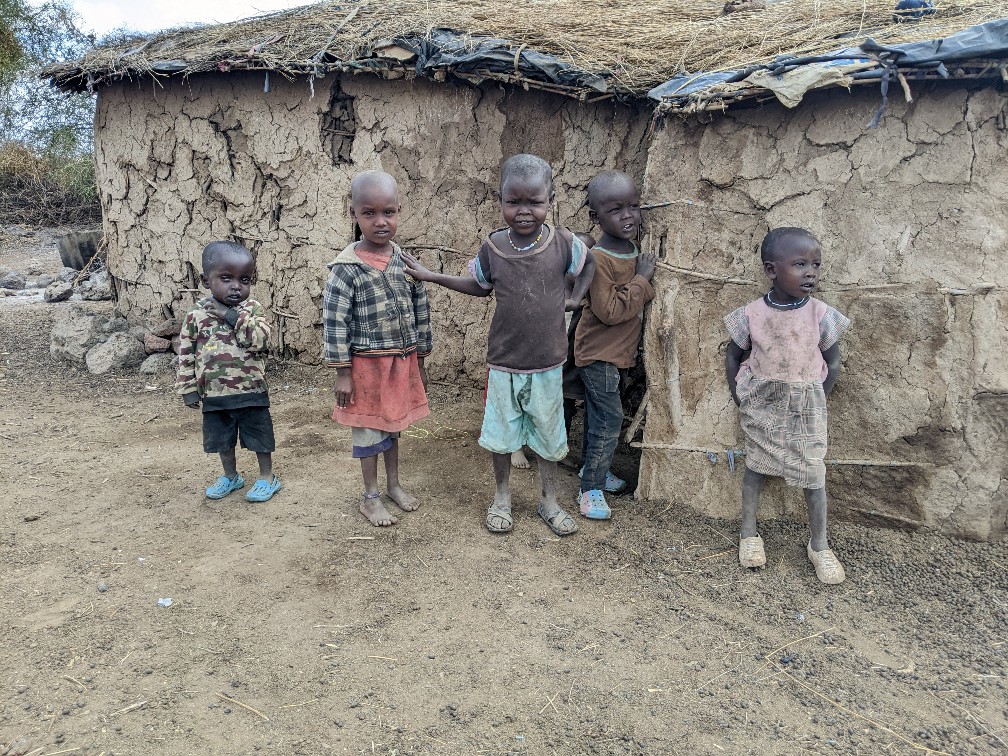
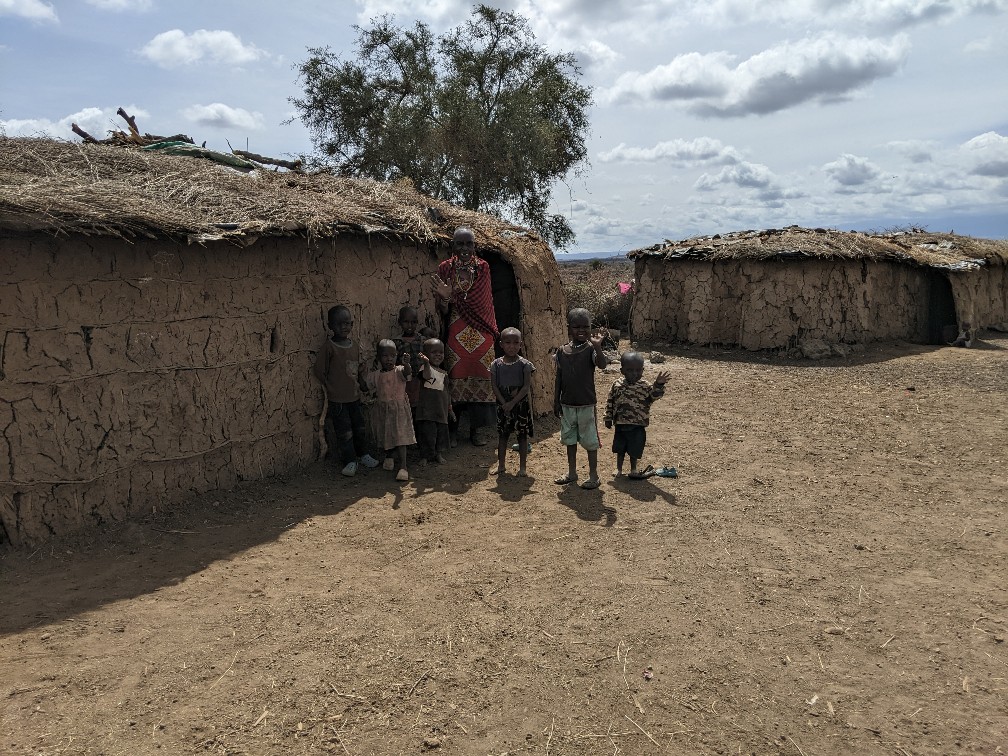
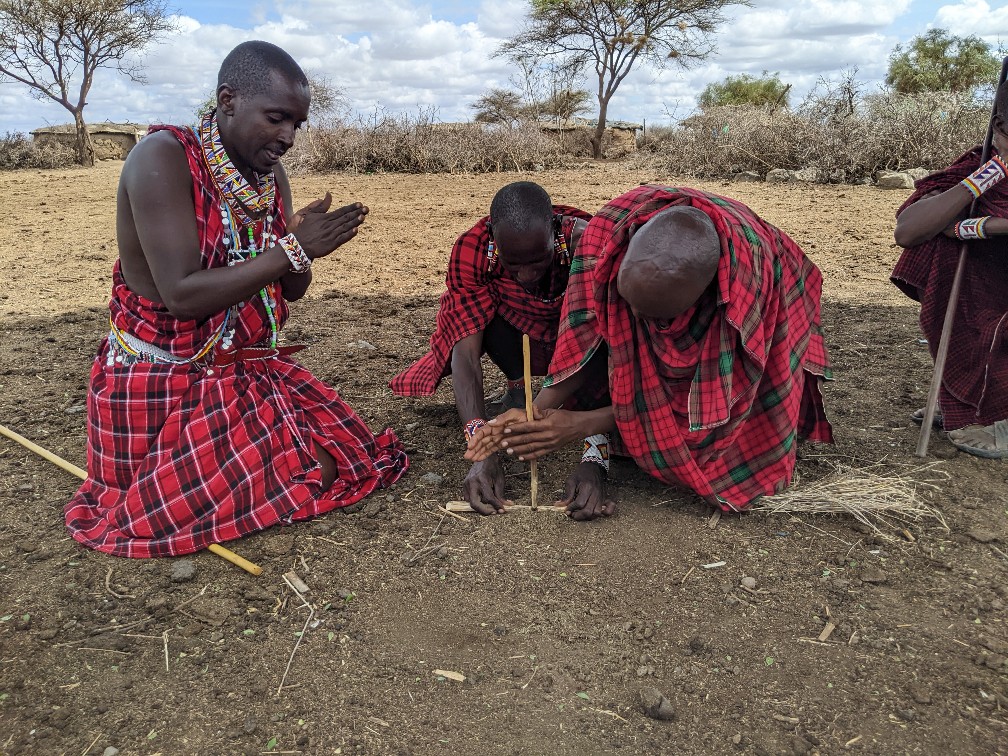
While talking to the chief’s son we learned that the Masai practice polygamy, but it is quite expensive for a man to have multiple wives. The price to the groom for each wife is 15 cows. (Our guide later told us that throughout Kenya having a lot of children is a sign of prosperity even if it means you have no money.) The parents arrange the first wife and then the man can select subsequent wives. He also told us that the drought had been difficult on them. The village started the year with 208 cows, now they have 34. They are very good at sharing the resources so our $20 fee to visit the village would be spread across the village. The elephants had broken the pump for the well so the women had to walk 1-2 miles to get water. It wasn’t clear when the pump would get fixed.
We said goodbye to the Masai and went back to the camp for lunch.
Later that afternoon we went out for another game drive. We were trying to find a cheetah, but no luck. We found a cape buffalo, some hippos and an oryx, in addition to the usual suspects.

Joseph found a nice spot under an acacia tree and we had cocktails.
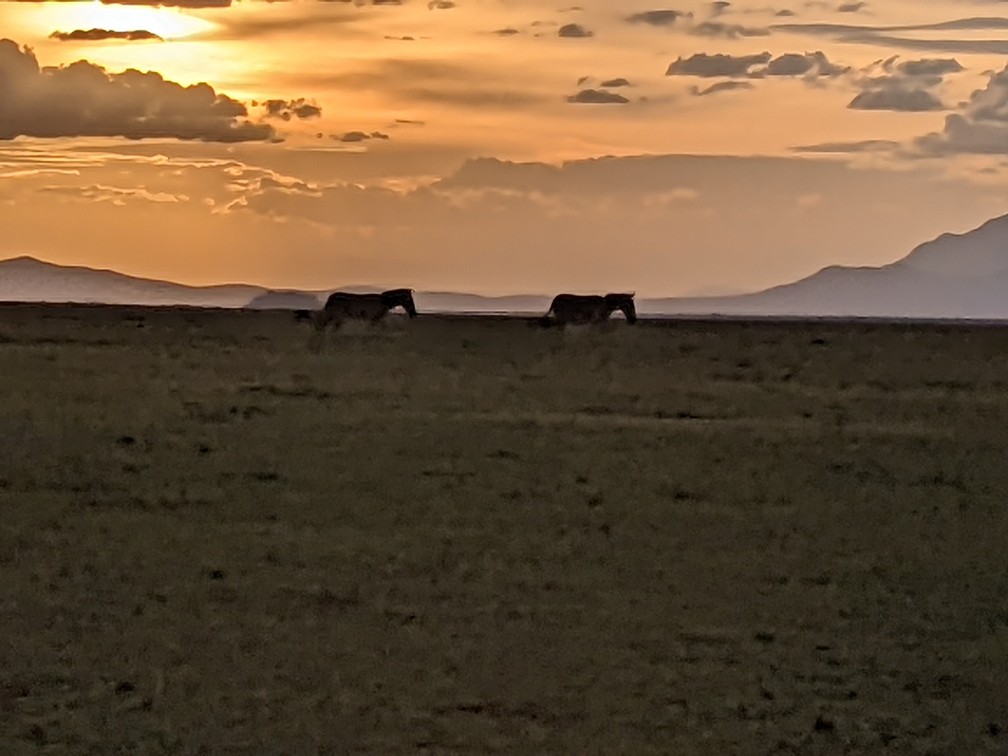
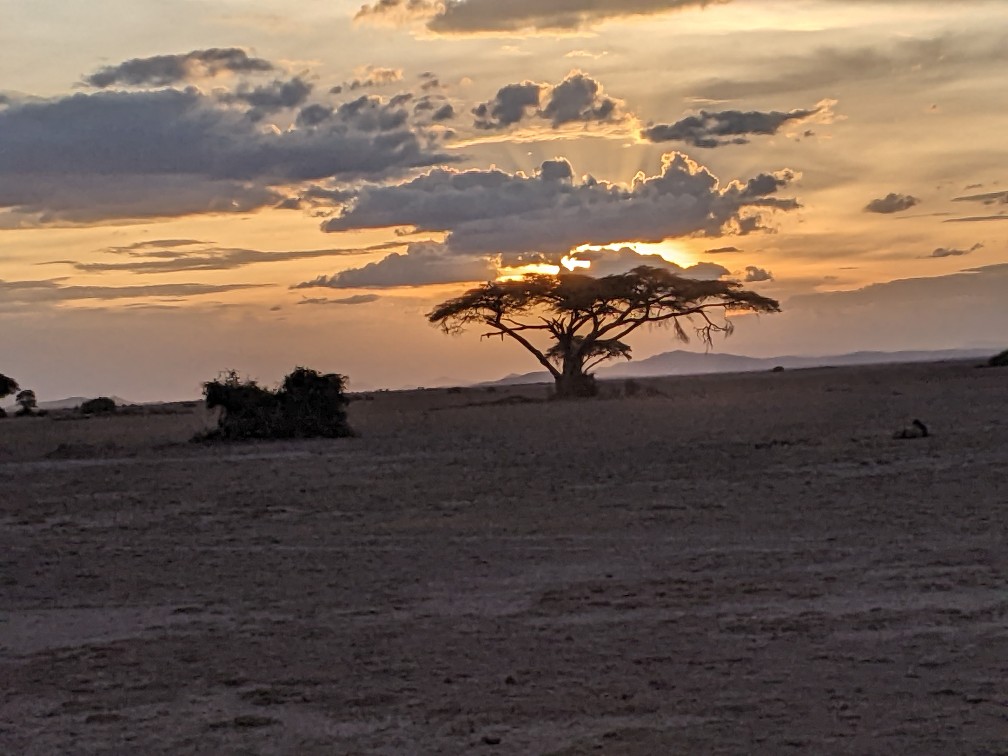
It was a chance for us to really get to know Joseph. We talked about his life, his family and the future. We returned to the camp and had a light dinner.
November 9, 2022 Nairobi to Amboseli, Kenya
We left the hotel at 6am because we have an early charter flight to Amboseli. There were only 8 people, including us, on the plane — a Cessna 208.
We arrived in Amboseli which is on the southern border with Tanzania around 9:30am. The primary reason for coming to Amboseli was to see Mt Kilimanjaro. We saw it from the plane, here is a lousy picture of it though the plane window.
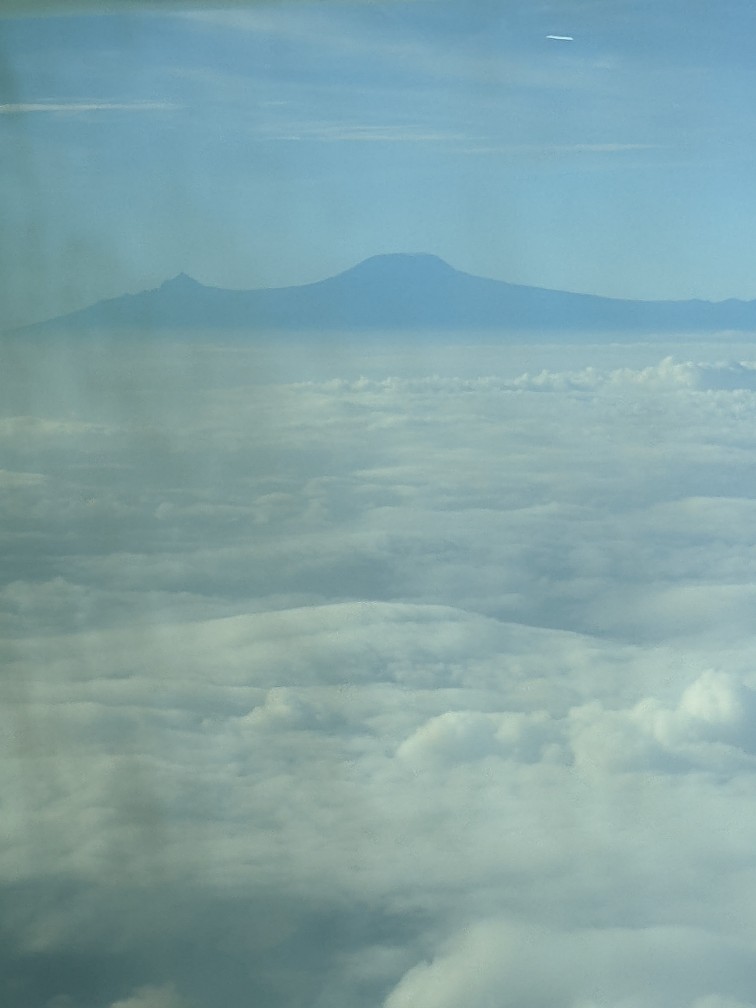

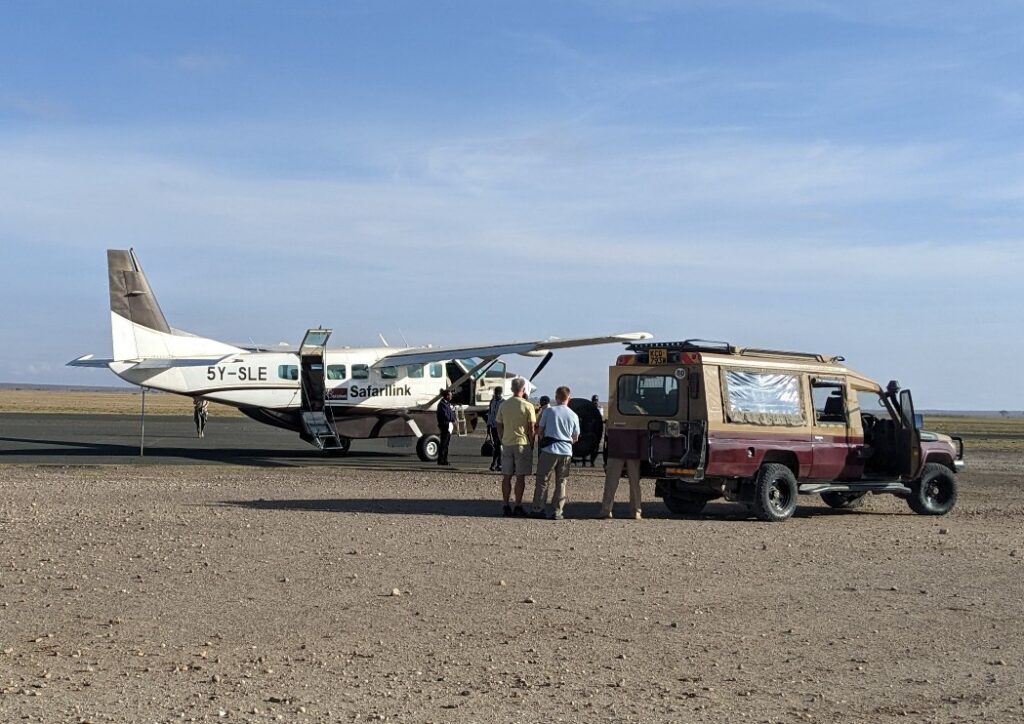
At the “international” airport we were met by Joseph, our guide. We had coffee and tea while we waited for two more guests to arrive on a different plane. It turns out the other guest were Douglas Costa, a pretty famous soccer player, and his wife.
Amboseli is a game park and brags of elephants with some of the largest tusks. The Kenyan government has been aggressive in protecting these elephants. The security patrols are instructed to shoot to kill any poachers they find, so they’ve been pretty effective. We did a game drive on the way back to the camp. I think Joseph is the most knowledgeable guide we have ever had. He provided details on all the animals we saw but I’d be here for days if I tried to recount them, so I’ll just post some pictures.
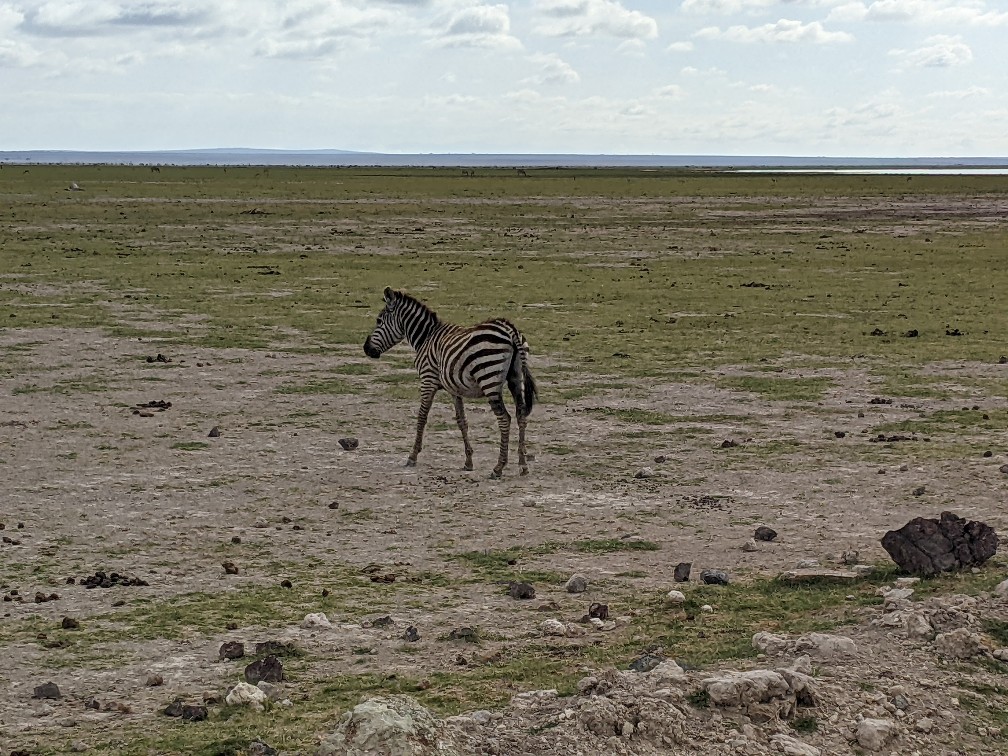
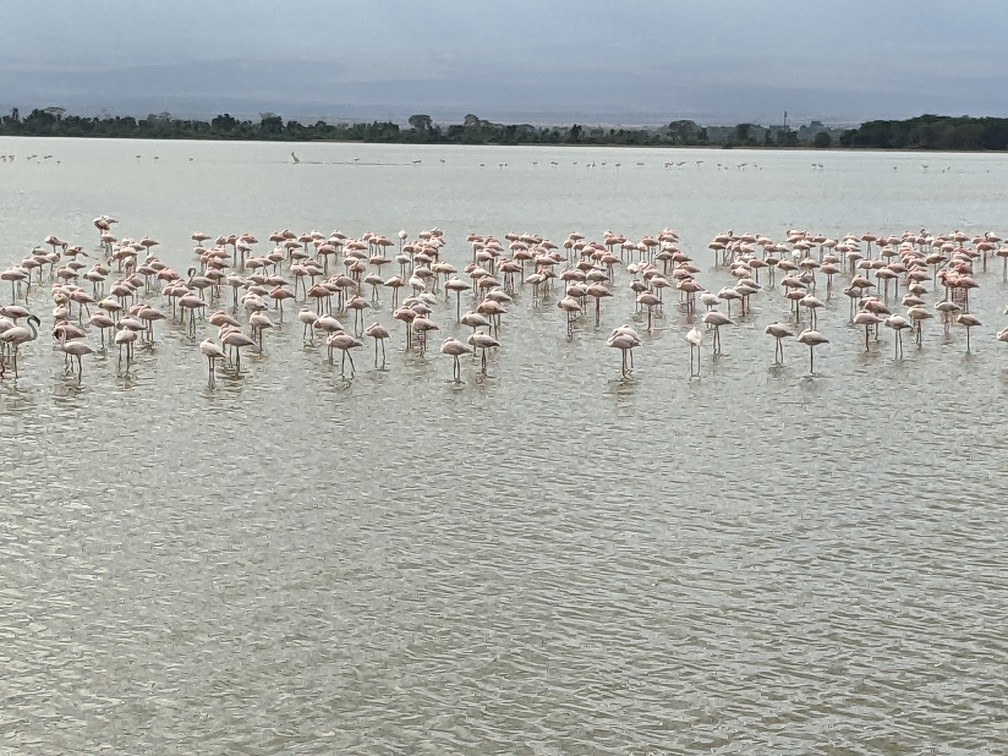

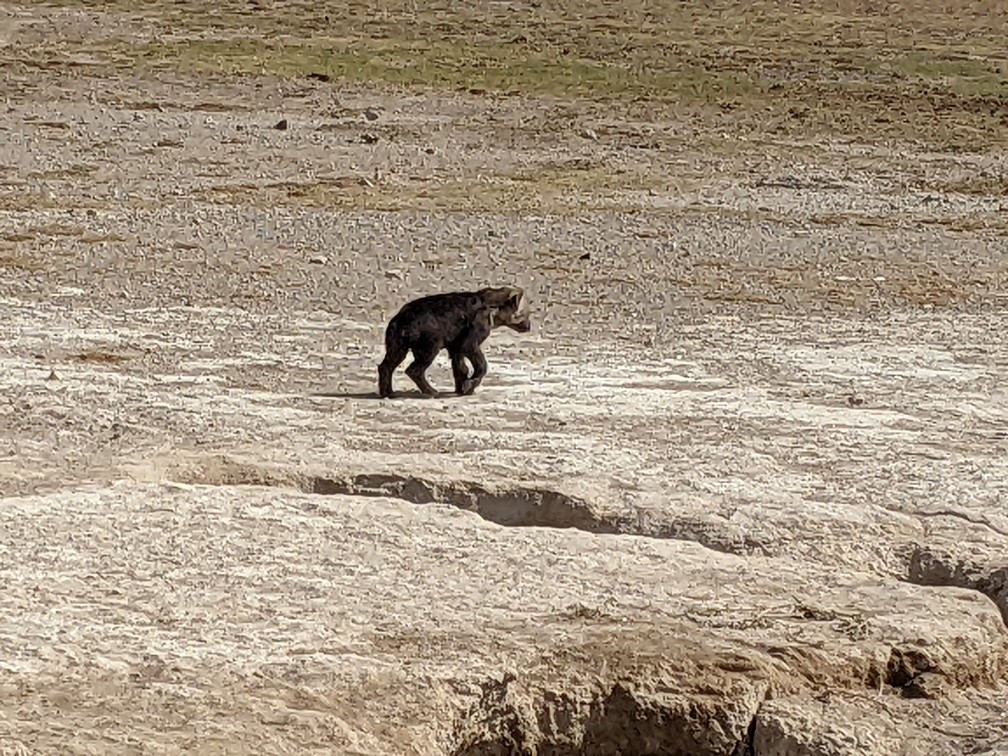
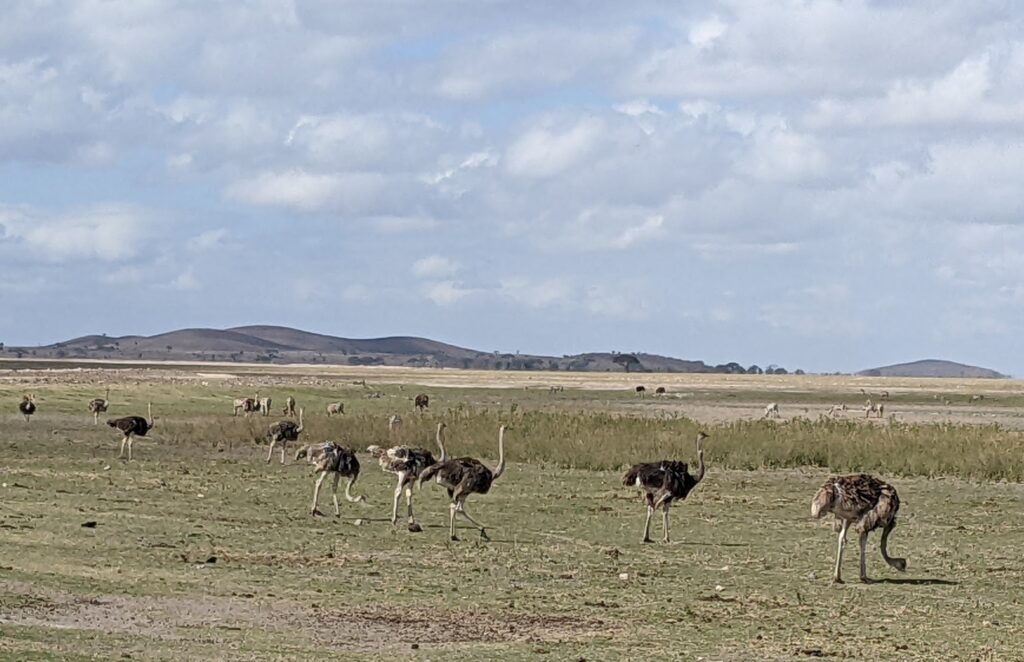
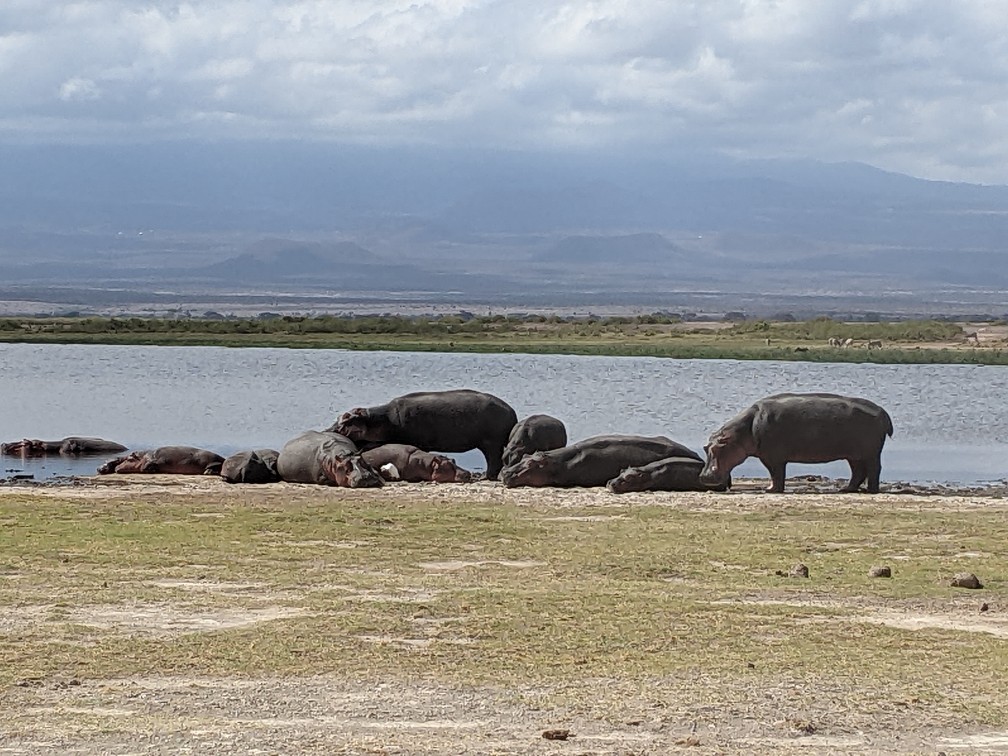
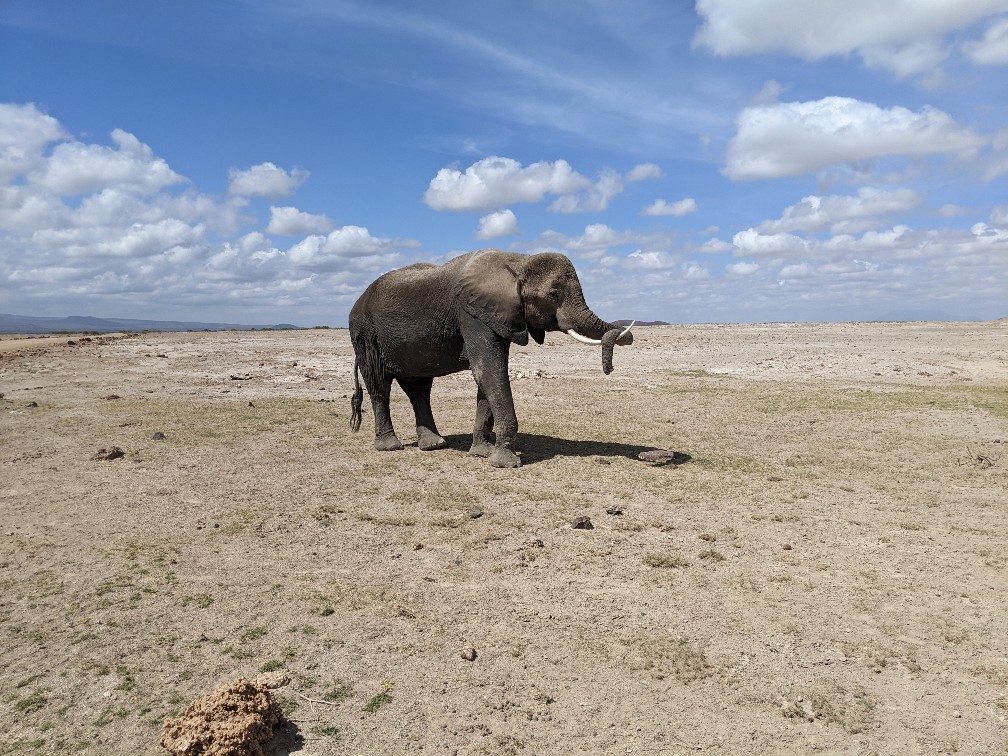
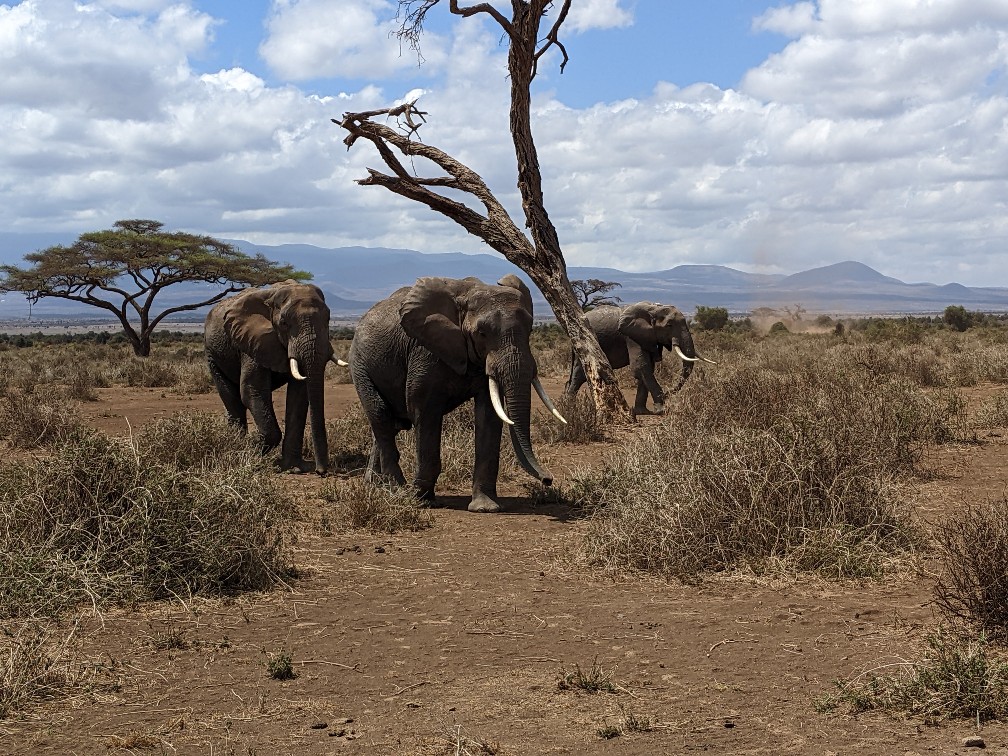
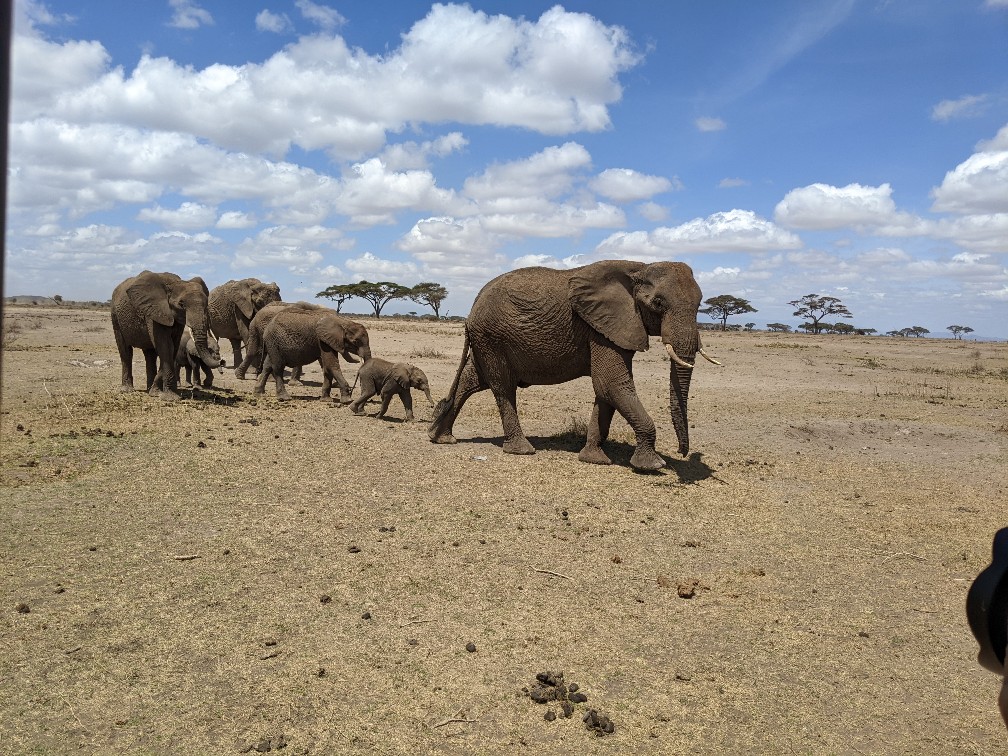
We learned that Amboseli is named for the dust devils that we see frequently. They are formed by the sun heating up the rocks and dirt.
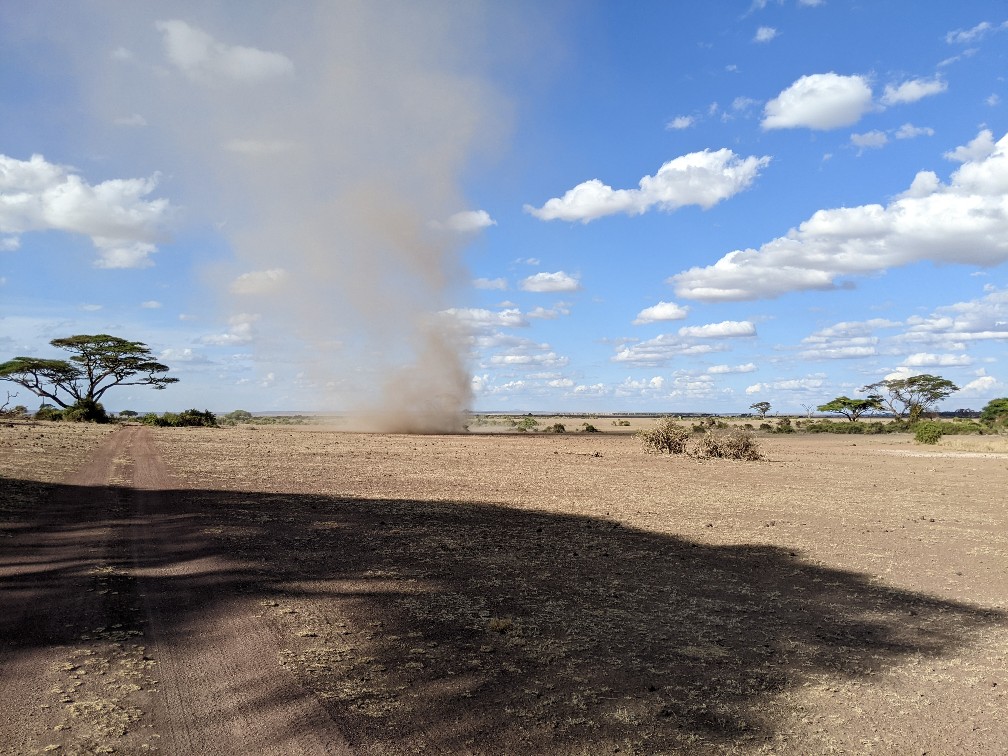
Climate change has been blamed for a four year drought in Amboseli. Of course the animals are affected by the drought and we see zebra and wildebeast carcasses everywhere. The clouds get caught by Kilimanjaro and the rain is dumped in Tanzania. It doesn’t make it to Amboseli. They are hopeful that they will get rain soon.
After about a 2 hour game drive we arrived at the camp. On a clear day Kilimanjero is visible from the camp, however it is often covered in clouds. Here are pictures of our camp, including the monkeys and dik-diks who were hanging around our tent.
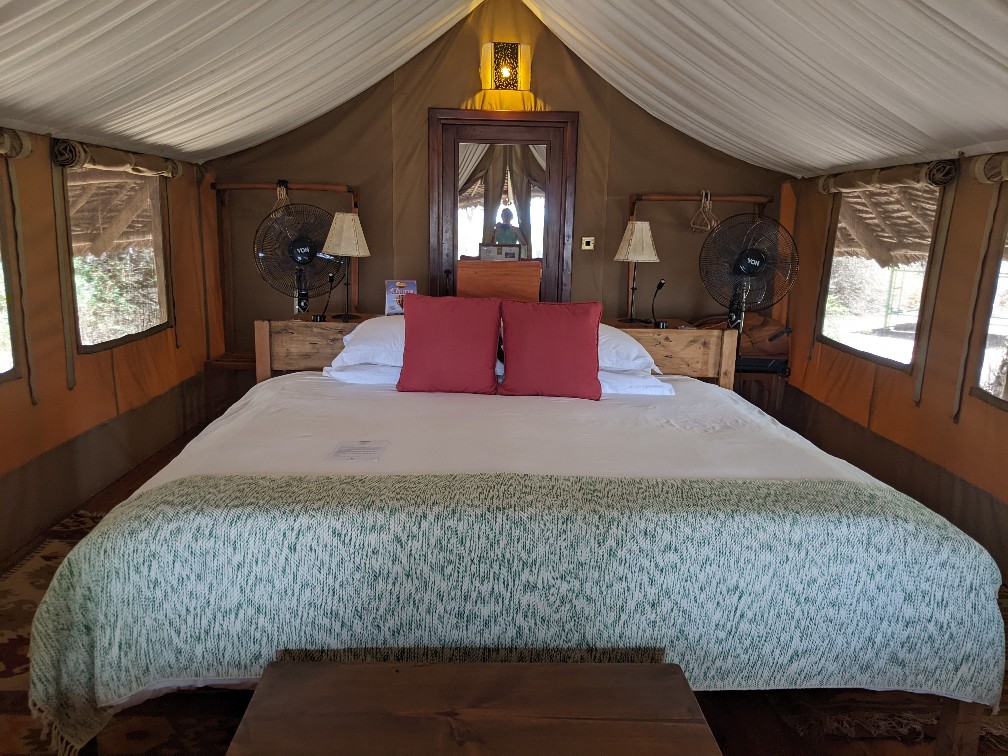
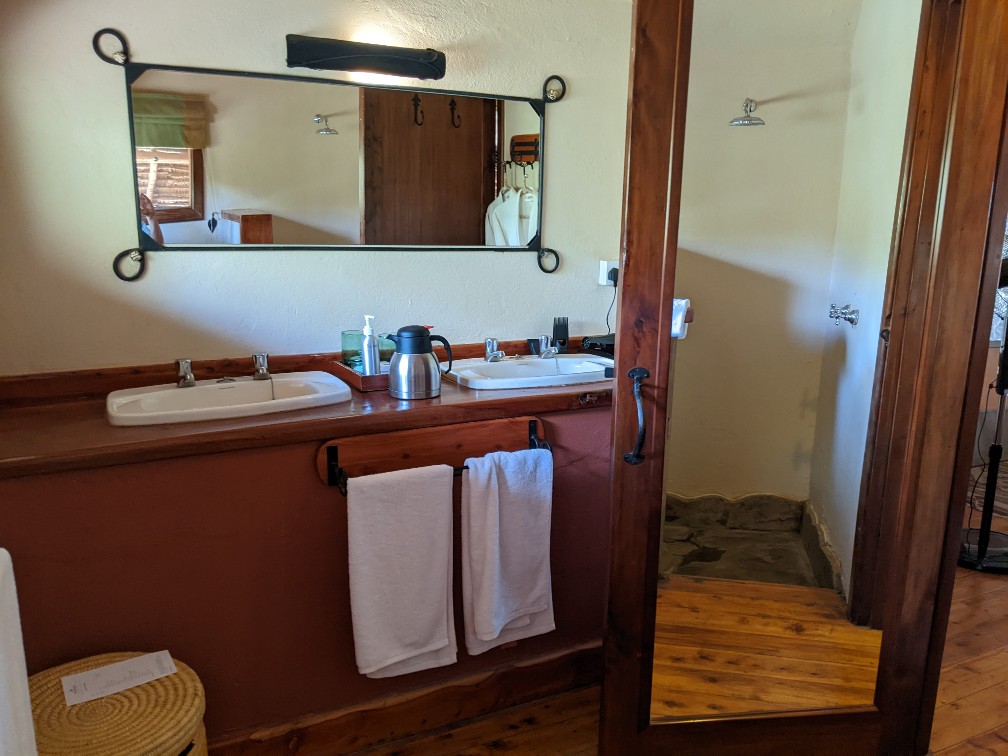

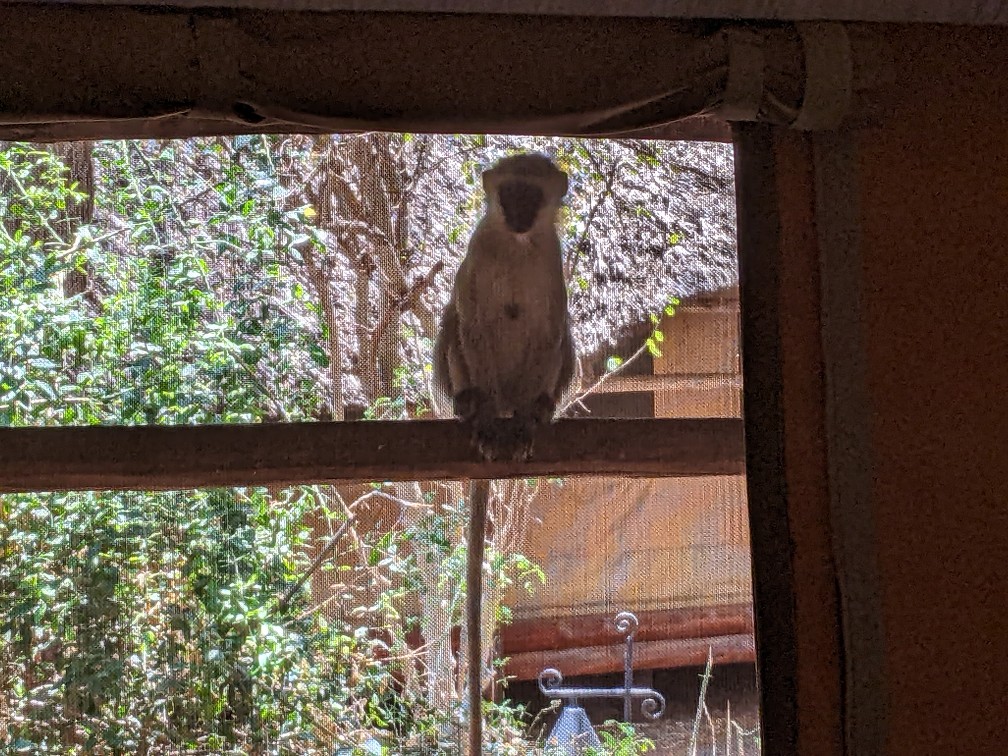
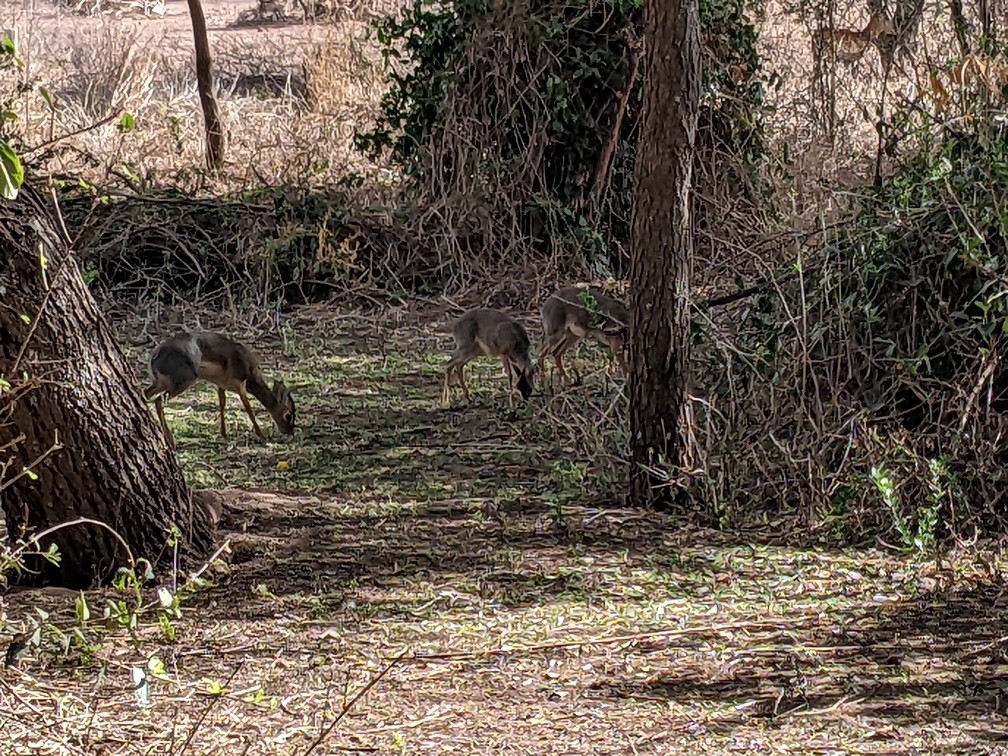
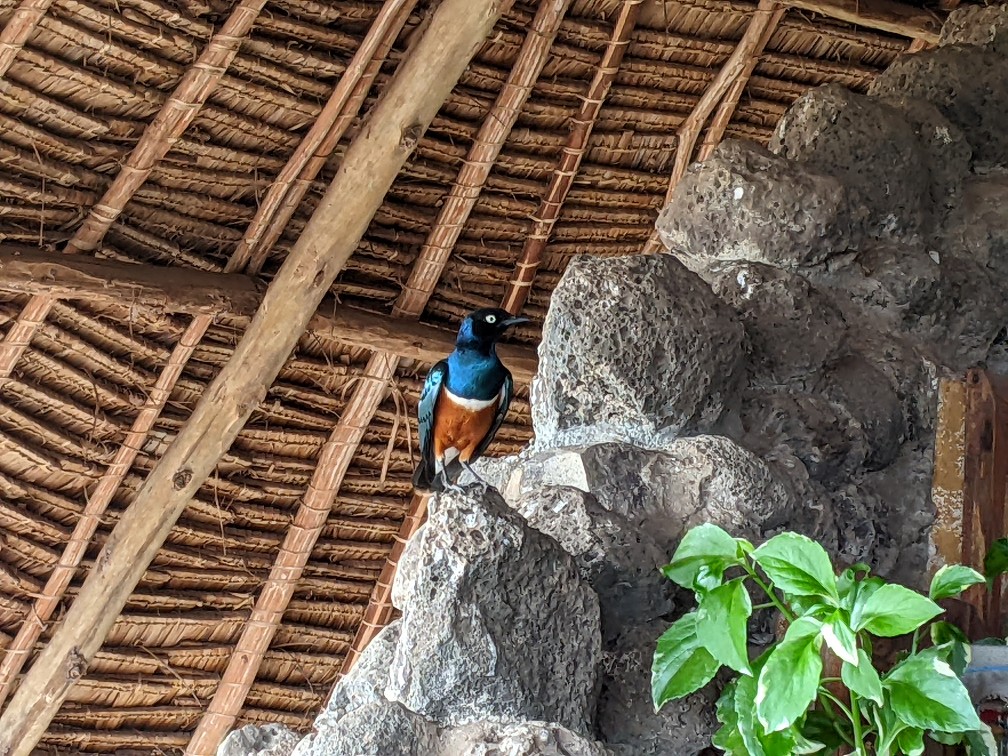
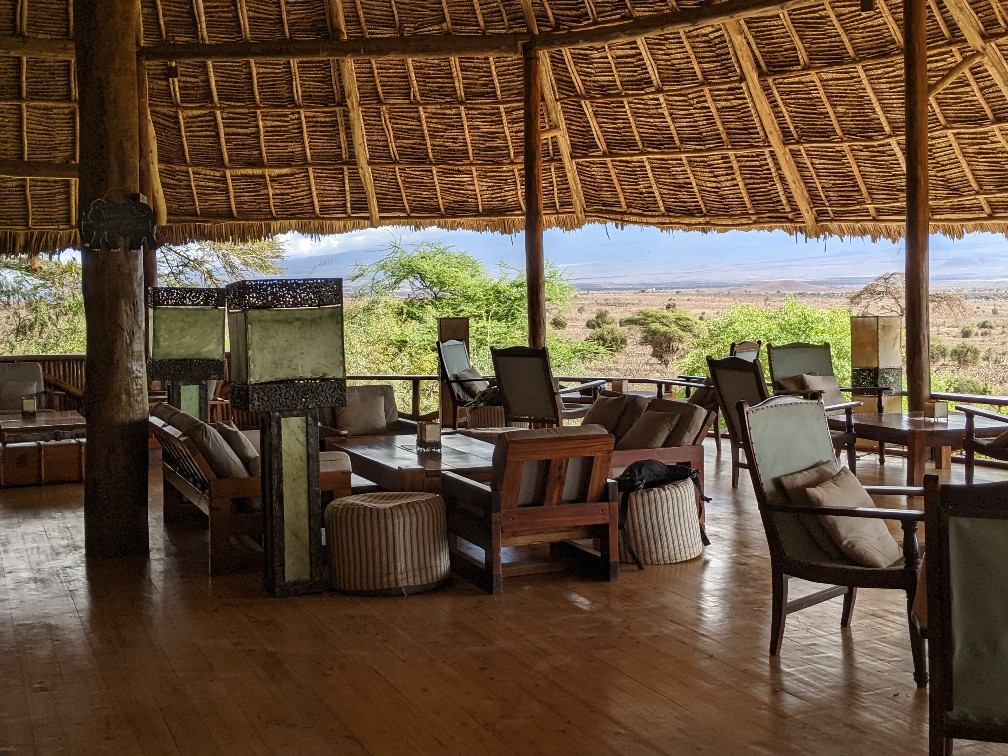
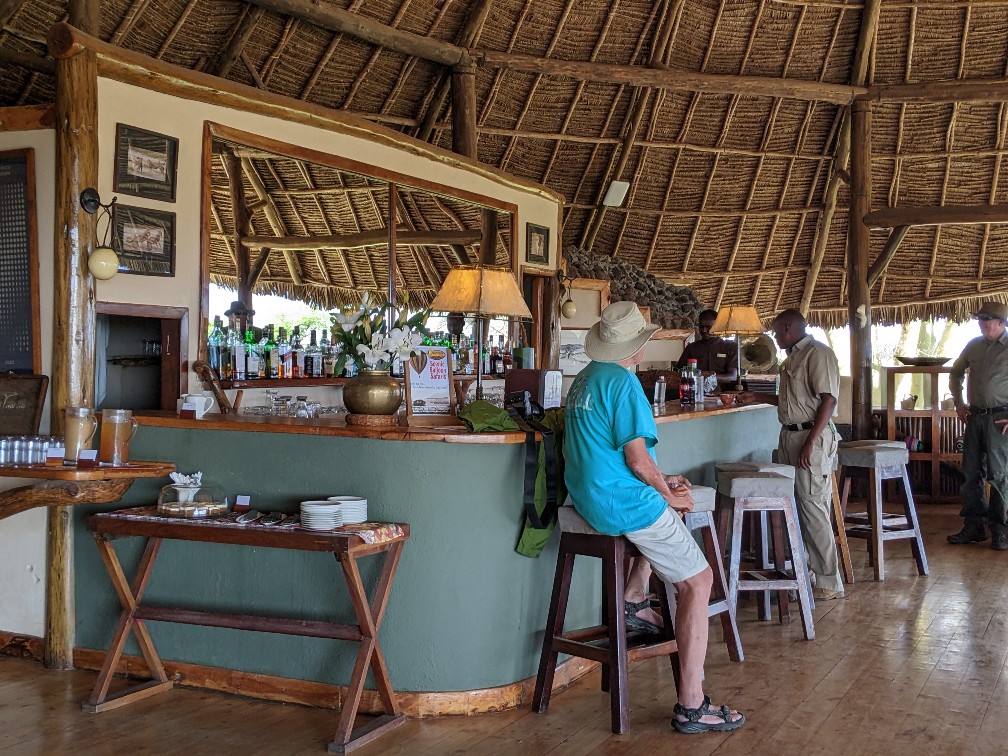
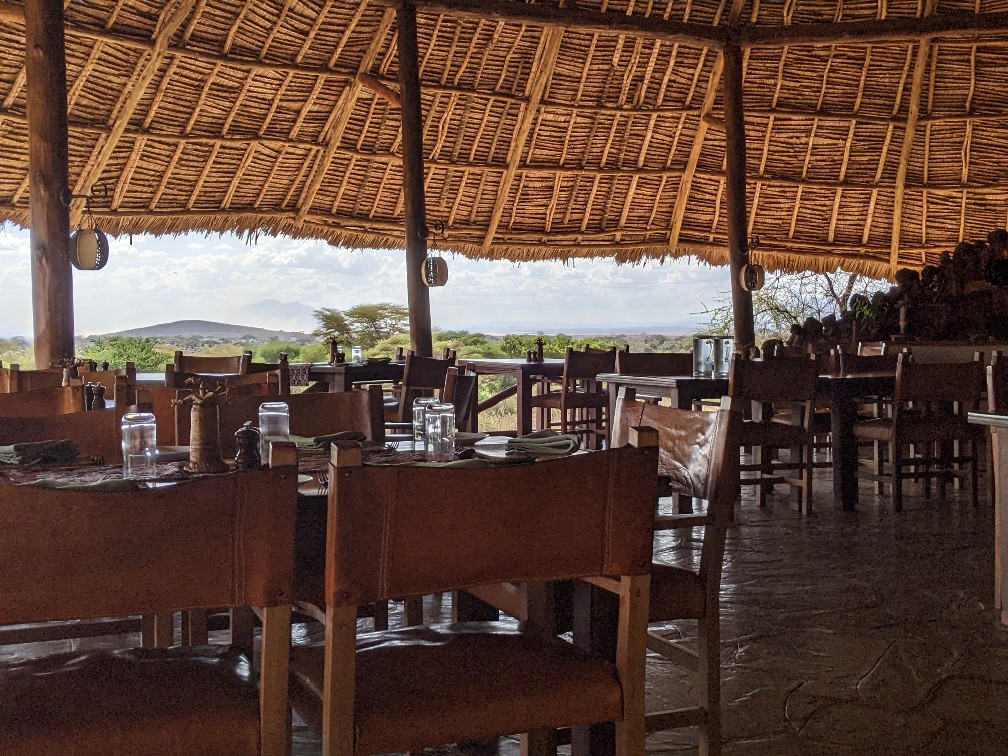
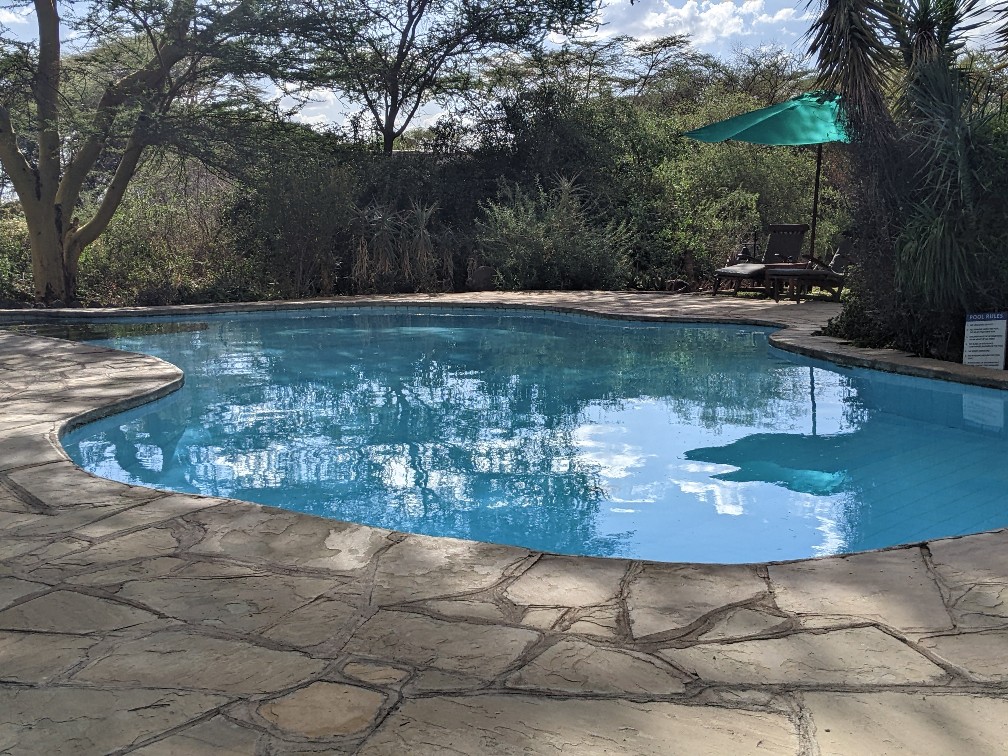
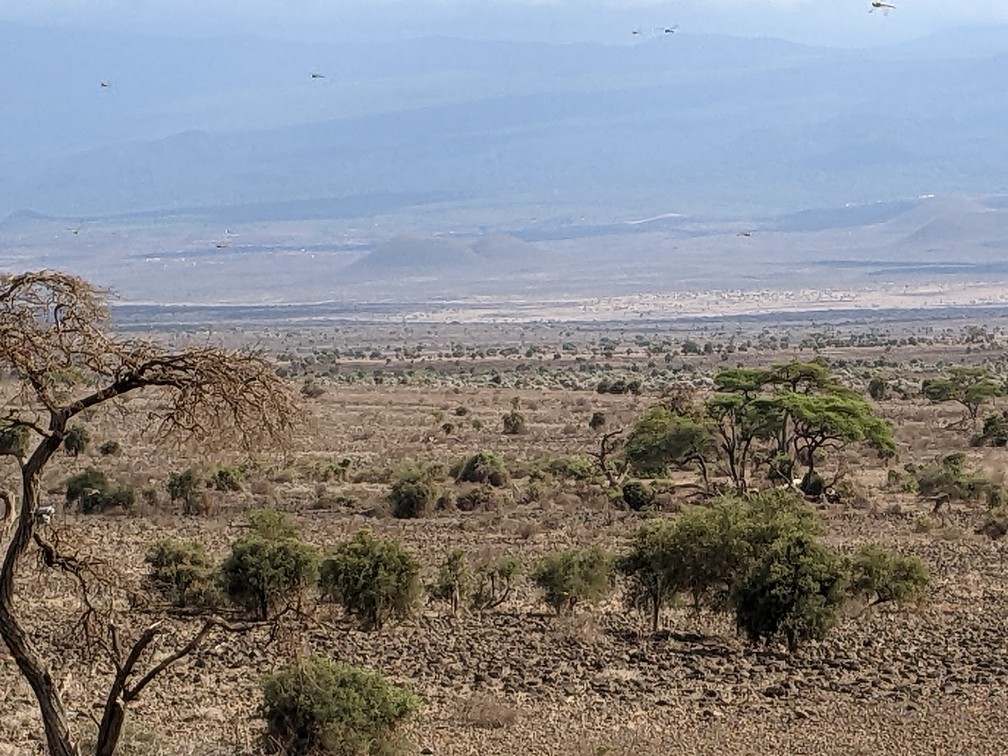
After lunch we relaxed/blogged until 4 when we went out on another game drive. We saw a lioness who had just taken down a zebra. She had her two 6 month old cubs with her and was teaching them how to hunt. It was gruesome so I’ll spare you the details. We found the rest of the pride which included two more lionesses, two sets of cubs, (a group of 4 three month old cubs and a three week old cub). Joseph thought there were more three week old cubs, but we couldn’t find them. We finally came acros the father and two other females.
Here are some pictures from the afternoon game drive.
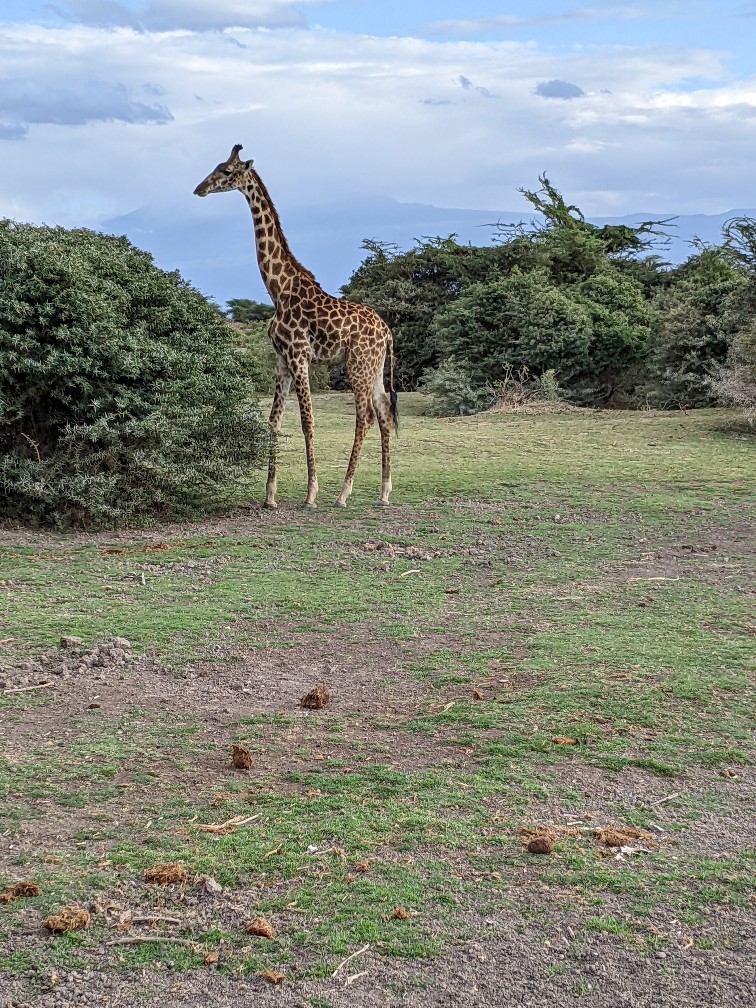
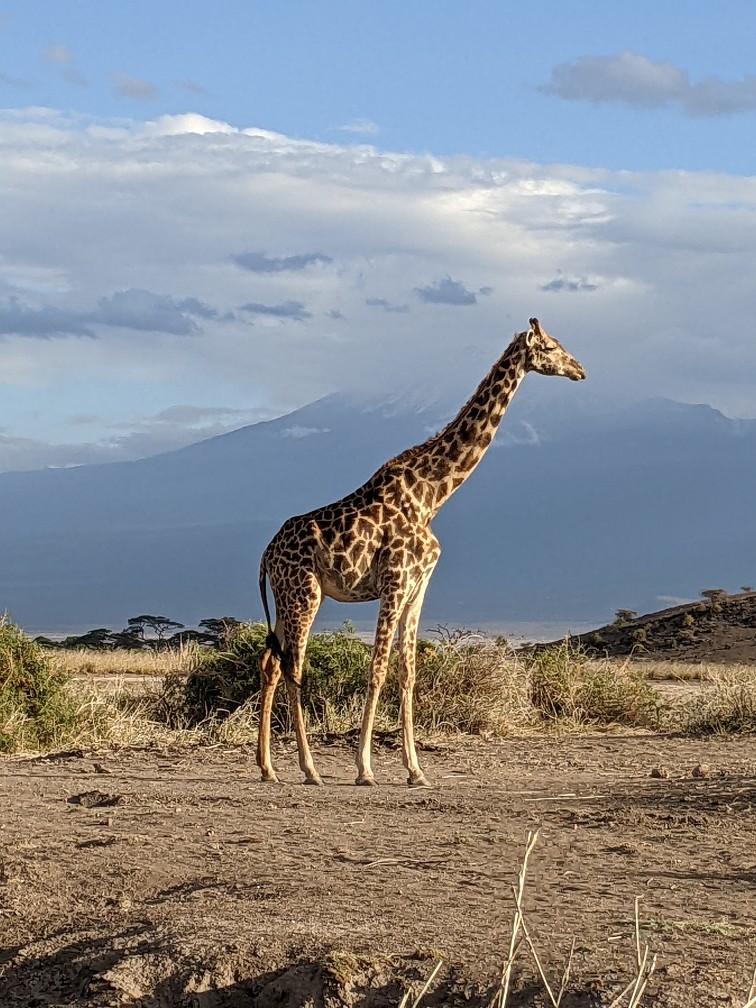
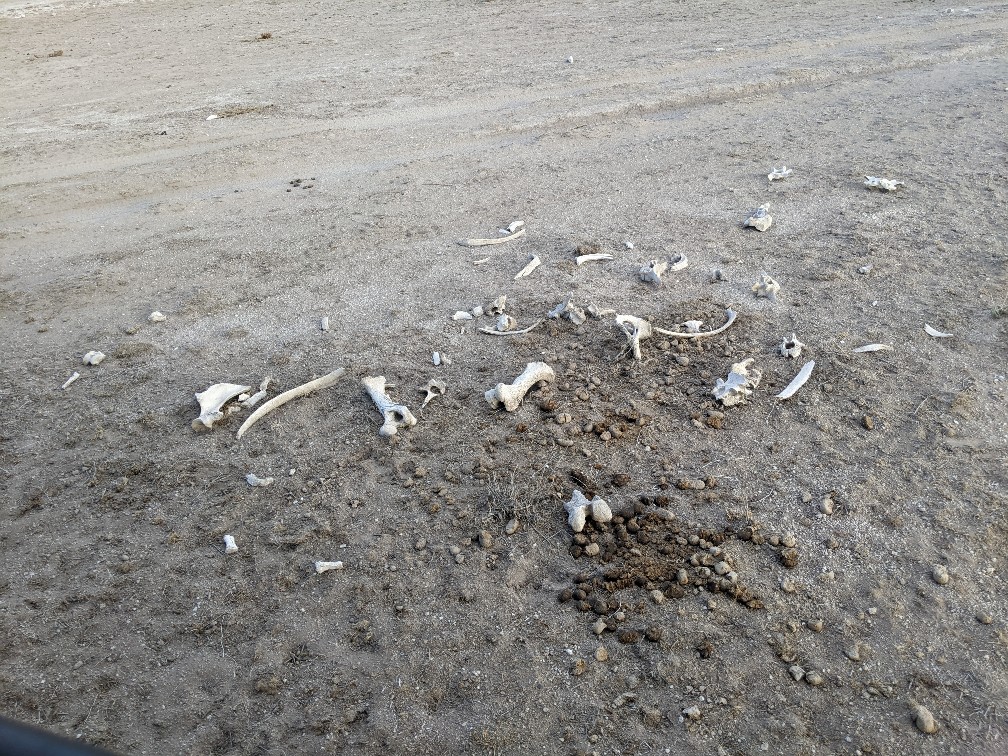
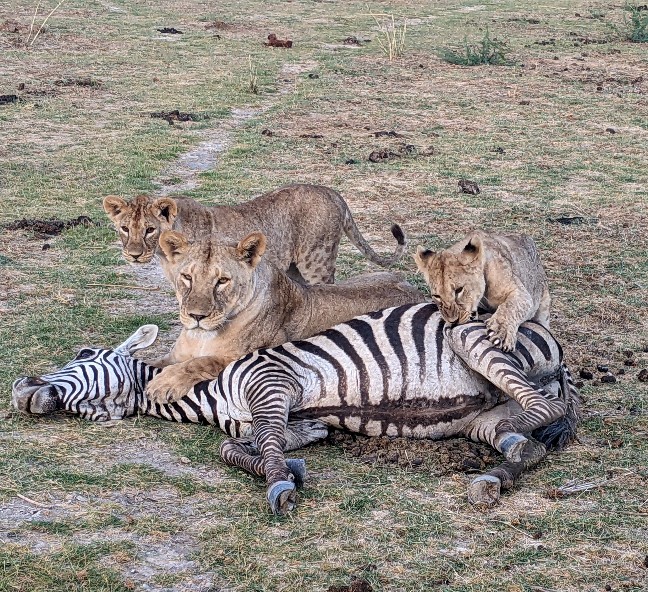
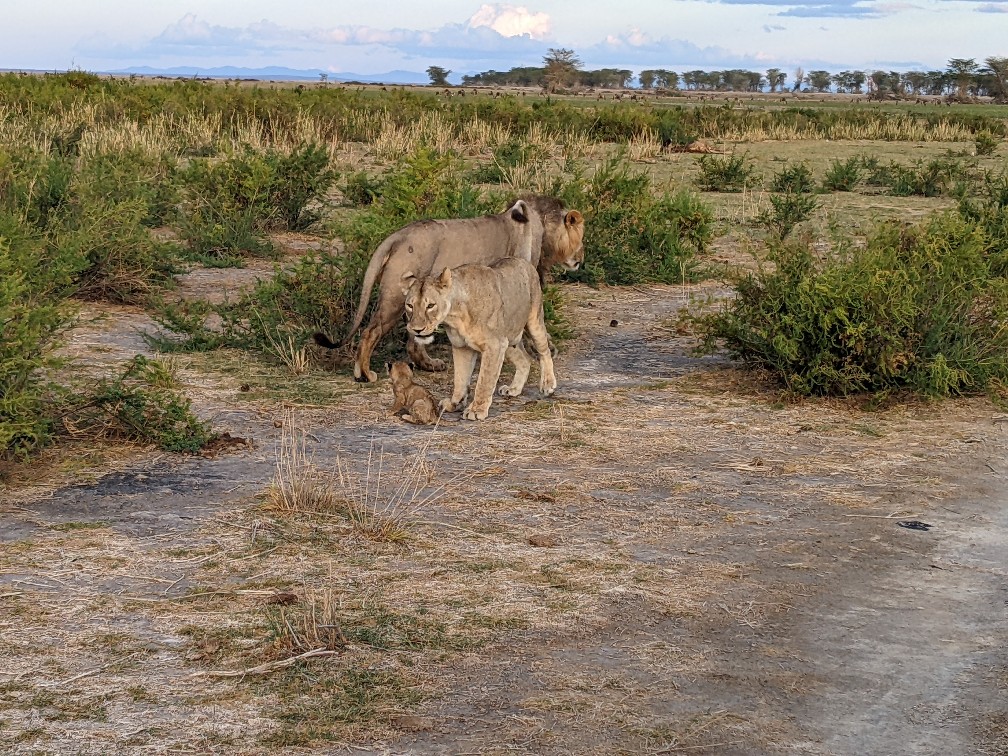
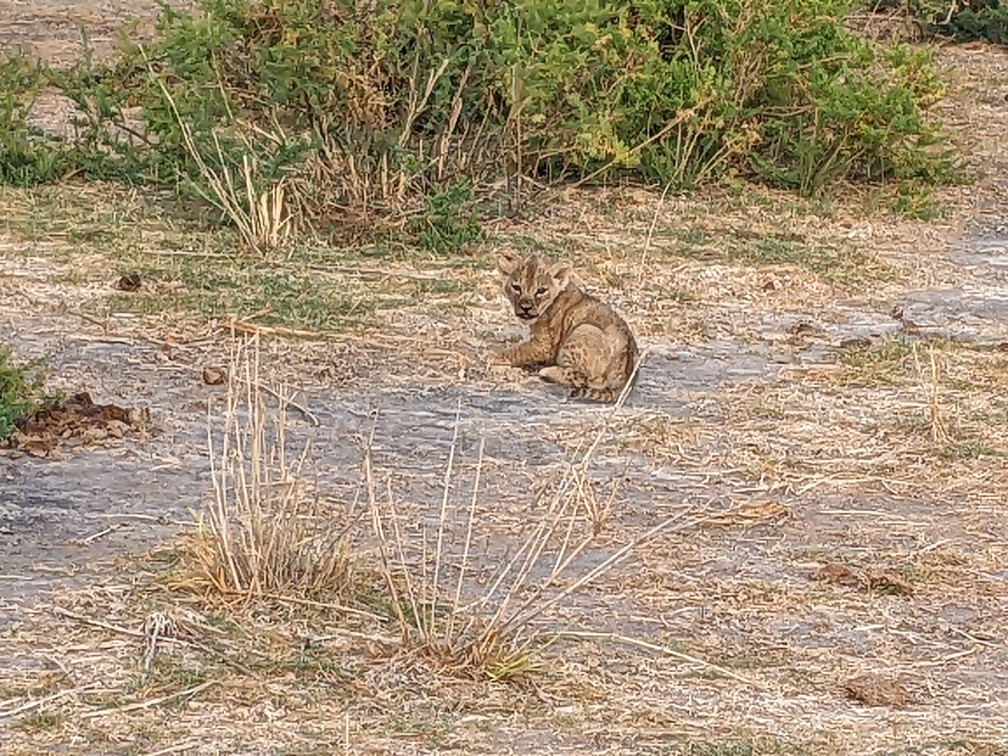
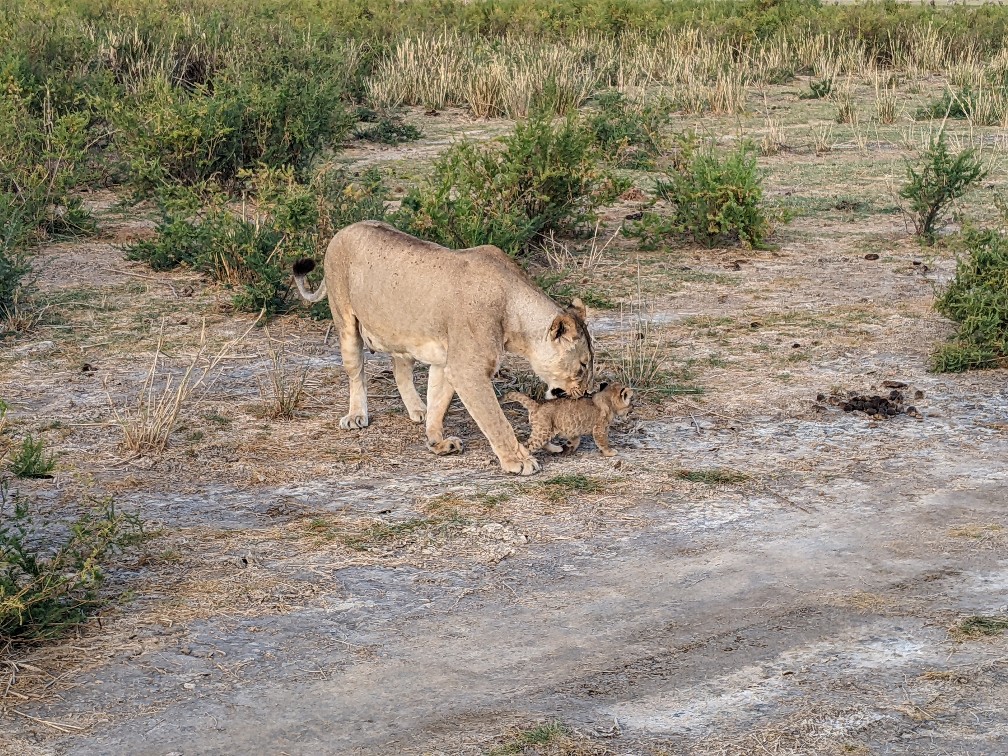
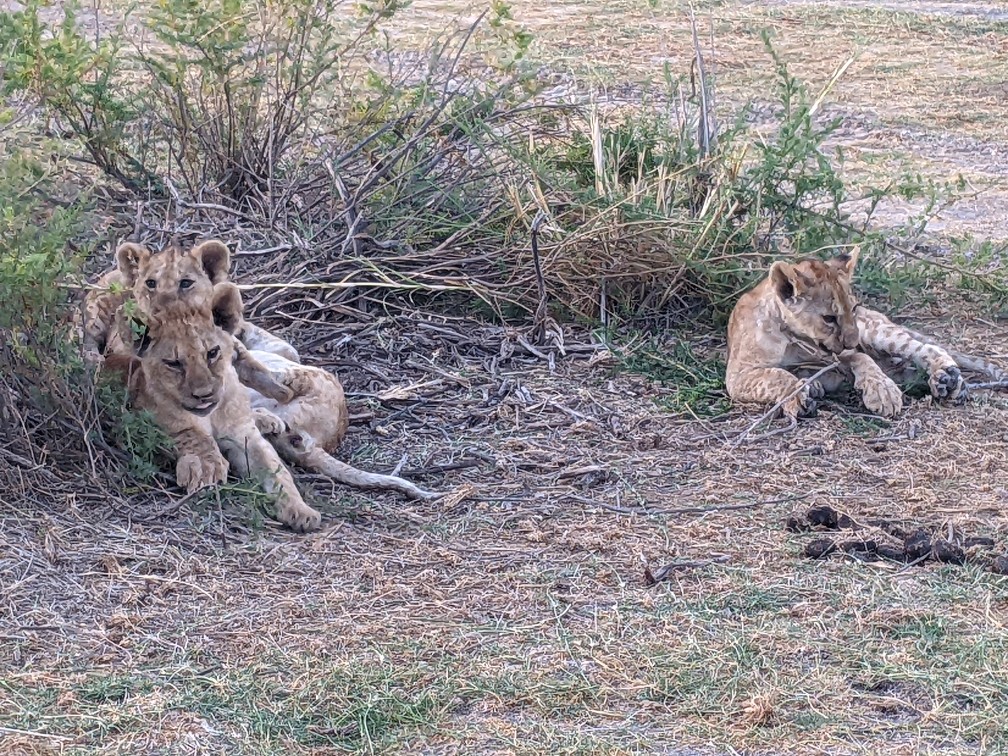
We had dinner at the hotel and went to bed early because we have an early morning game drive tomorrow.

November 8, 2022 Ruhengeri, Rwanda to Nairobi, Kenya
Today was a travel day. We were supposed to go see the golden monkeys which live in the same forest as the gorillas but our flight back to Nairobi got changed so we didn’t have enough time. I’m not happy about this. Here is a picture of a golden monkey so you can see what we missed.

We had a leisurely morning. It is their low season because they have a lot of rain. During the low season, the hotel allows locals to stay there. There was a general who stay at the hotel last night. He said good morning to Rick, so Rick asked him a question about the war in the Congo and Rwanda’s role. All of a sudden he didn’t know how to speak English. Hummmm!
We left the hotel at 10am and it was actually sunny! We really loved our hotel, called the Bishops House. The facility was beautiful and everyone was great. We got to know a lot of the staff.
We drove 2 ½ hrs back to Kigali. Along the way we noted how clean the roads are because the government pays people, primarily ladies, to sweep the road every day. We also noticed that in the city (Ruhengeri is the second largest city in Rwanda) they have sidewalks! Pretty much every hill we could see was used for agriculture. The Rwandan people are very hard working. Everyone is doing something. There were bicycles everywhere. We saw many men pushing bikes piled high with product for the market. We saw other bikes that were taxis, taking people from one place to another.
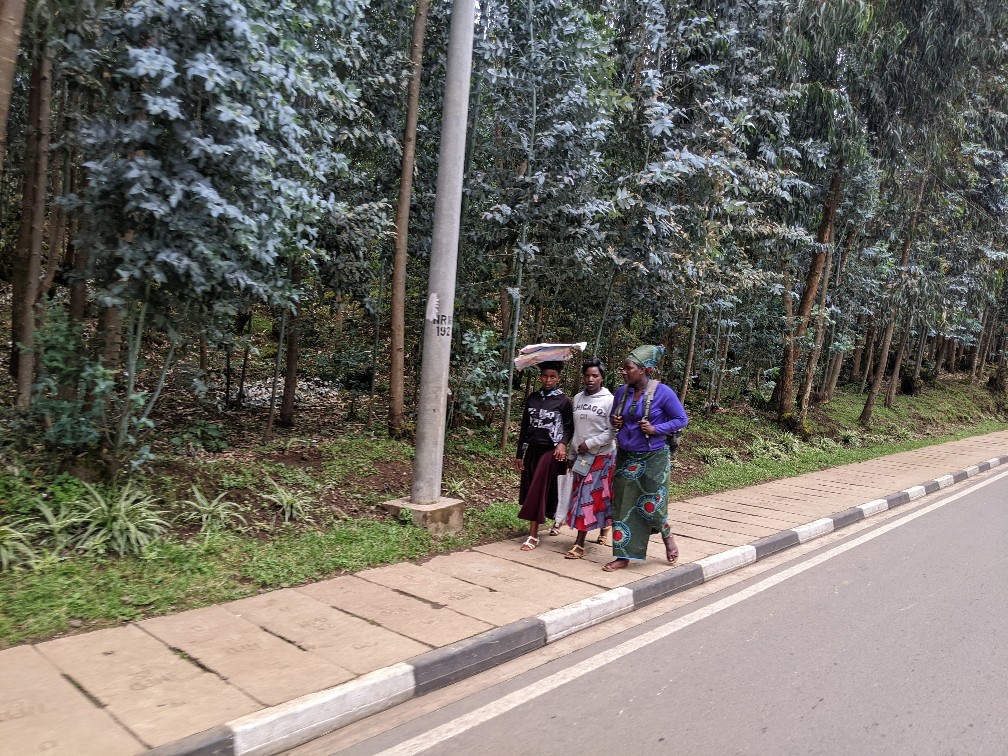

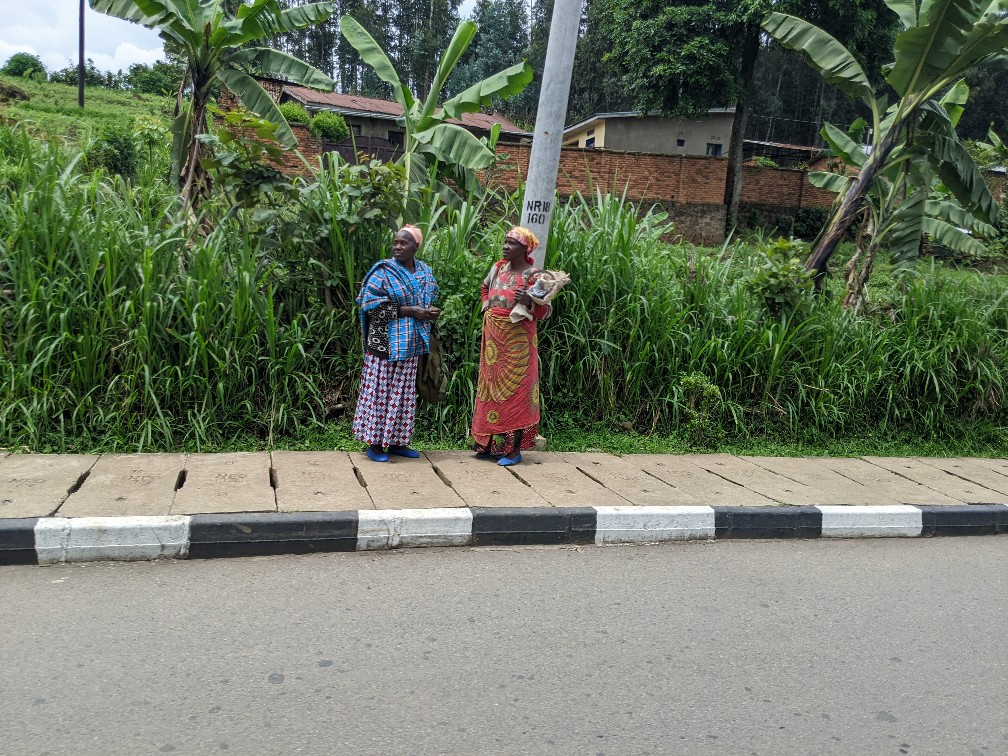
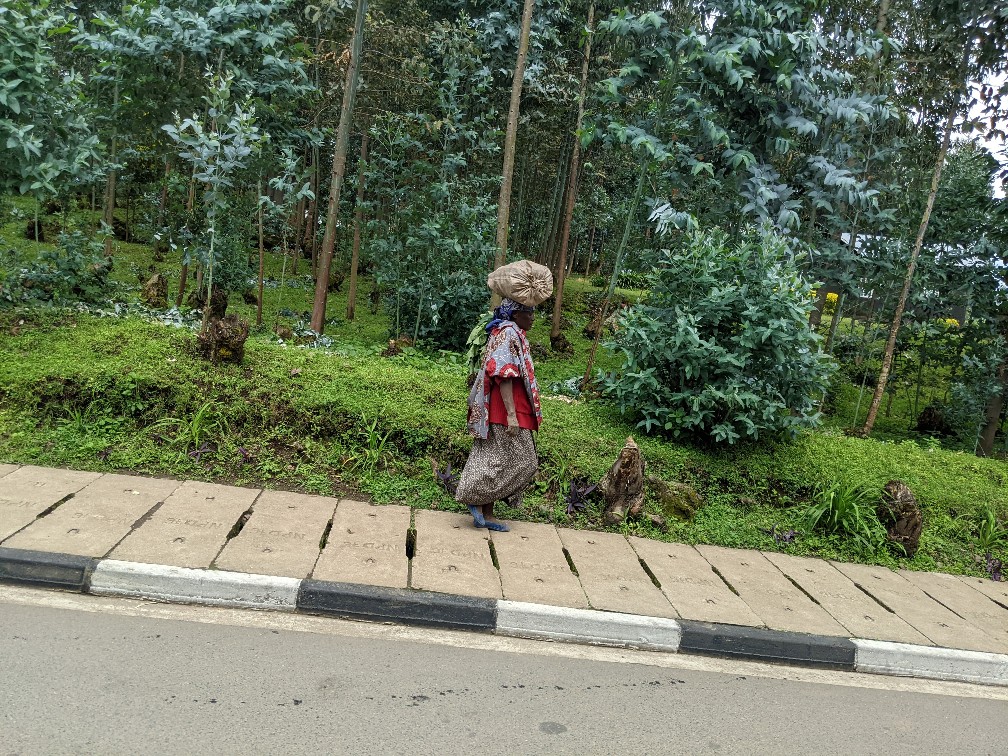
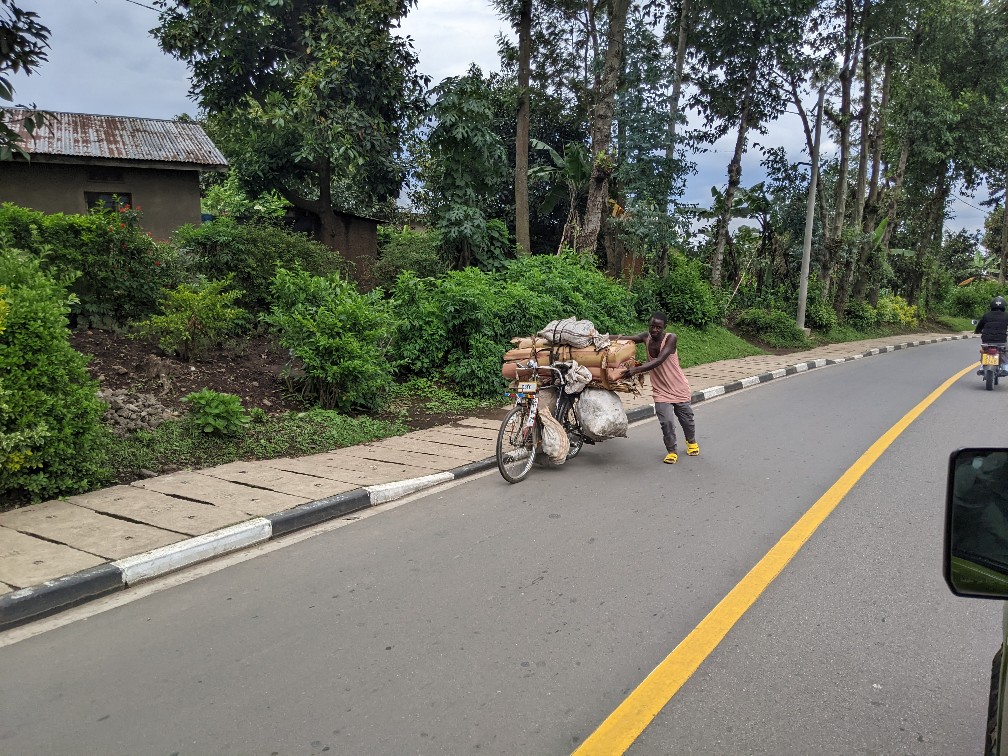
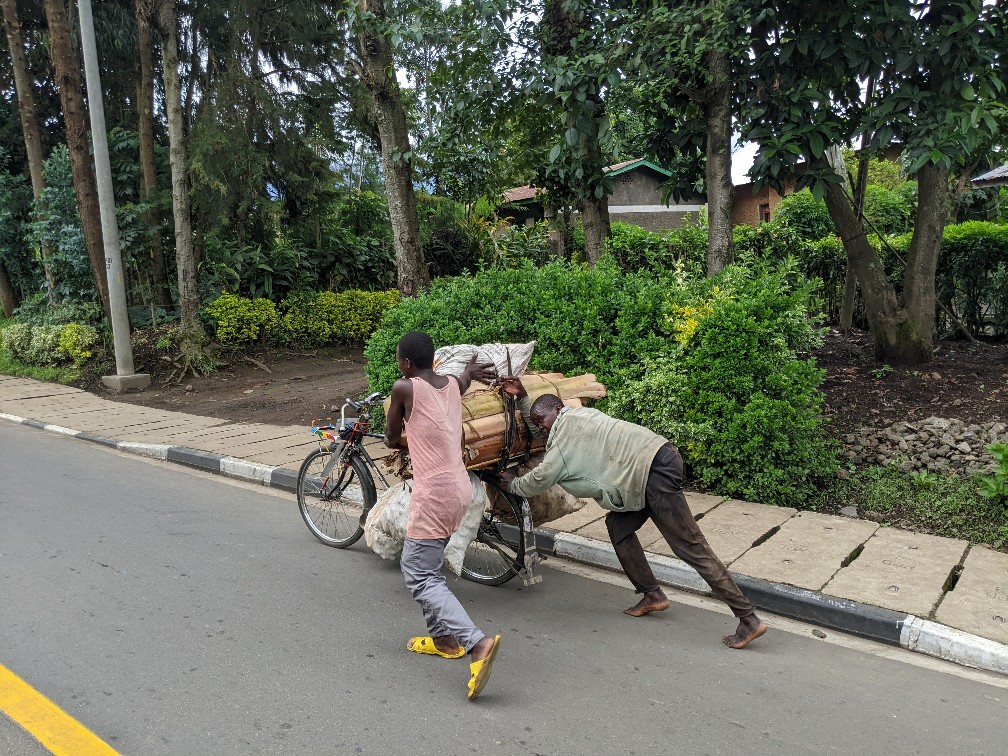
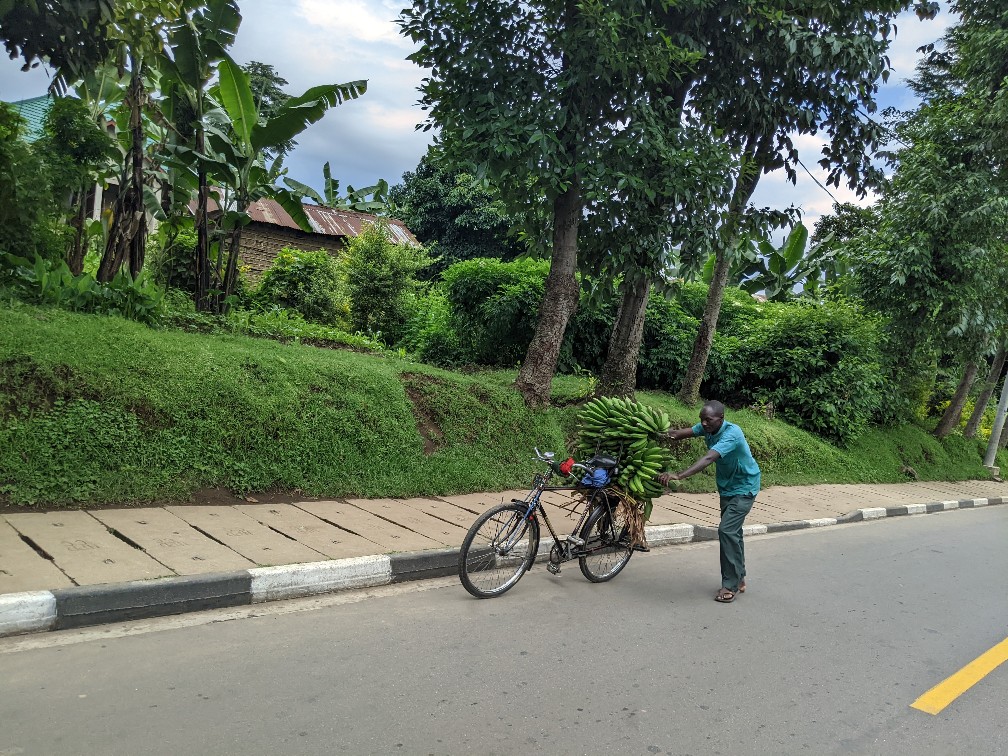
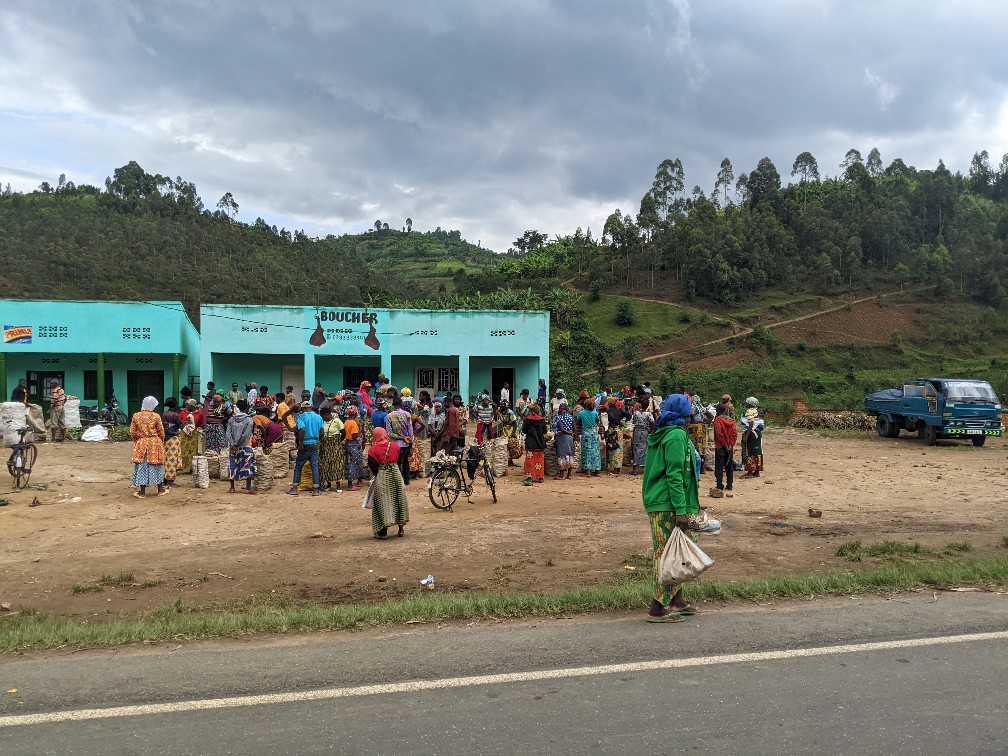
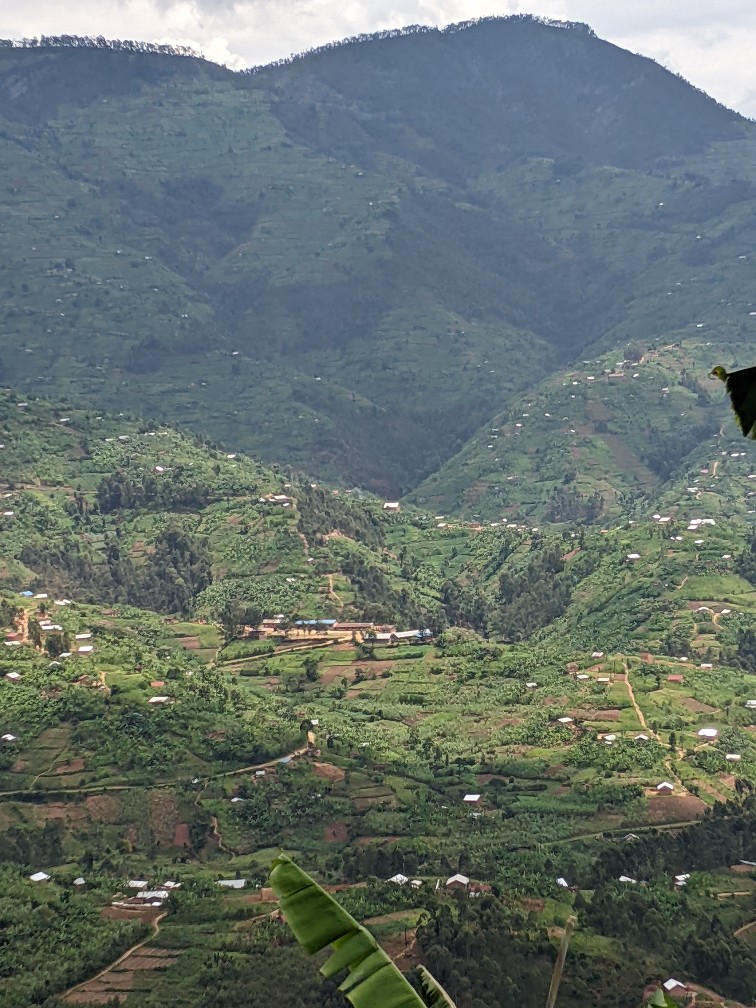
We saw a lot of flags. The Rwandan flag is green for agriculture, yellow for mining, and blue for water, with a star in the upper right corner representing the country’s bright future.
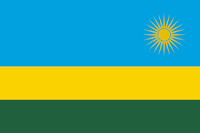
We agree that Rwanda has a bright future. They seem to have a stable government and limited corruption. They have done a good job marketing and managing the gorilla trekking. The education and medical systems seem to work — a lot to be said, and a distinct set of differences from most of Africa.
We would have like to have seen more of the country and could imagine going back one day, maybe to see the golden monkeys. Everyone was very nice and their English is very good. We have heard some murmurings about limited freedom of speech and their involvement in the war in Congo, but don’t have any real insight. We would highly recommend a trip to see the gorillas, making sure you spend enough time to really see the country.
We arrived at the airport and had to go through a security check which involved taking all of our luggage out of the car and having a dog check for explosives. There was a thorough check of the car. Here is a picture of Hussein, Rick and our car.
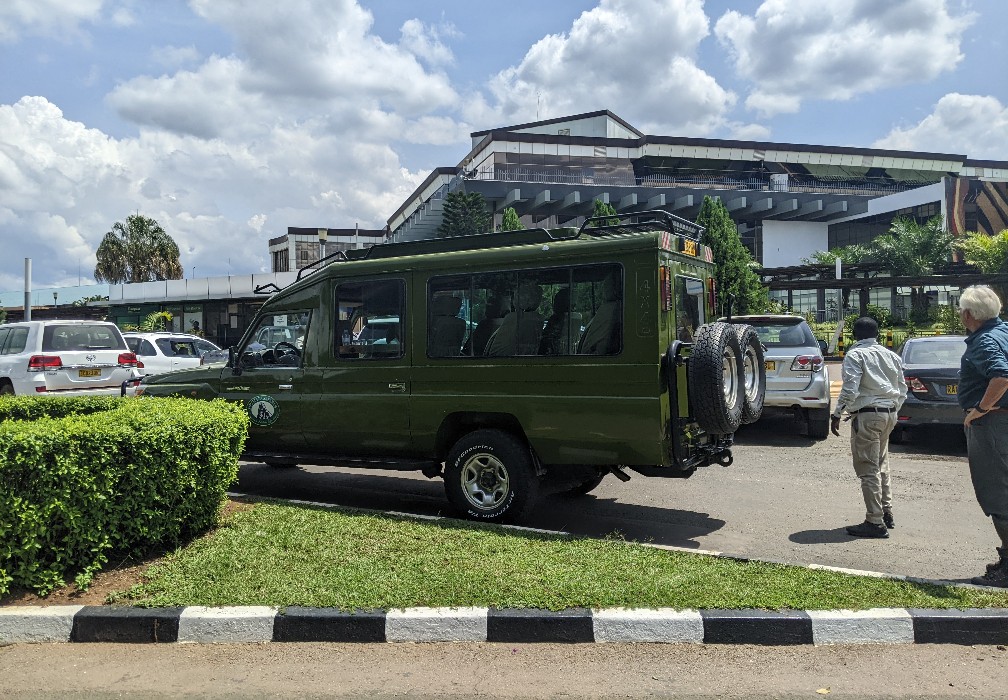
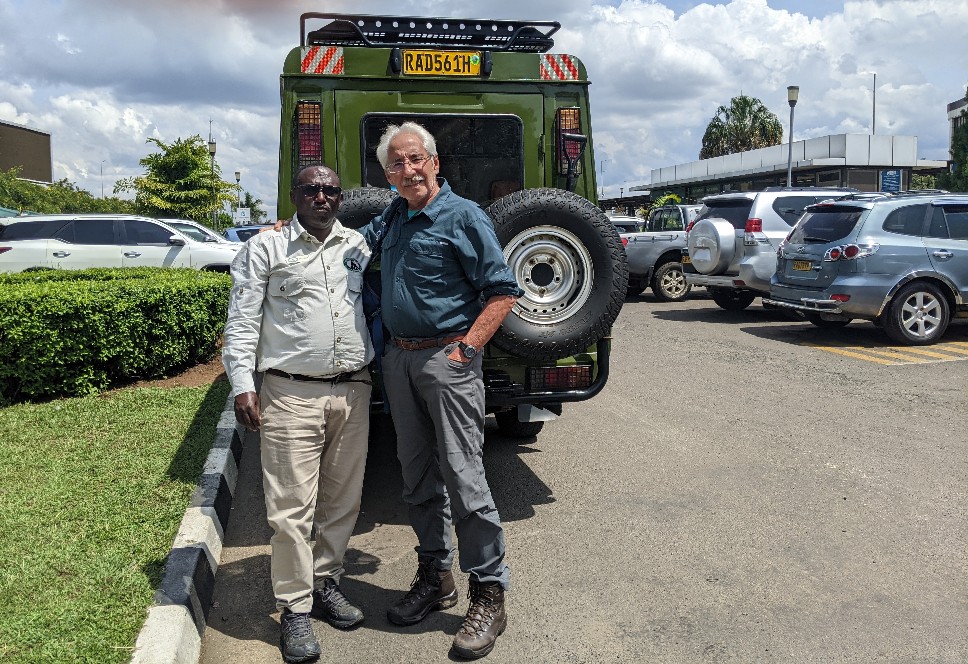
Once we had passed through immigration we went to the lounge and got some lunch. We were joined there by our friends, Valentin and Sandrine (friends from gorilla trekking) who were also flying to Nairobi and then on to home in Paris. Unfortunately our flight was delayed until about 5 so we might have been able to see the golden monkeys after all.
We were meet in Nairobi and driven to our hotel.
November 5, 2022 Nairobi, Kenya to Ruhengeri, Rwanda
We left the hotel at 8AM for the airport terminal, just a 5 minute drive. We got checked in and through customs. We hadn’t had breakfast at the hotel because we were going to have a long wait at the airport for our flight. We planned to go to the airport lounge for breakfast. The lounge was at the very other end of the airport. It seemed like it was about 5 miles away from our gate. It was the worst lounge we have ever been in. A review we found online described the food as salmonella on a plate. Needless to say we didn’t stay long, althought the cappucino was good. We headed to our gate and just waited for the flight. The Air Kenya pilots decided to go on strike that day so our flight on Air Rwanda was full with people being rerouted.
We sat next to a Rwandan gentleman who had been in Kenya studying for a masters in IT. He described a fairly dire educational system in which they were teaching him IT theory but nothing practical. We tried to figure out how to help him, but so far we don’t have any ideas. We also met a swiss woman and her two children. Interestingly she had heard a lot about Rick’s cousin, Bruno Manser. I guess he is quite famous.
We were met at the plane by an agent of our travel company who helped us through immigration and then took us to a lounge where we had a covid PCR test. The covid test was not to enter the country, it was to ensure we weren’t sick so we could see the gorillas. Both our tests were negative.
Outside the airport we met our guide, Hussein. He took us to lunch in Kigali, the capital of Rwanda, at a 5 star restaurant in a hotel. Our initial impressions of Rwanda and Kigali are very good. The roads are in great shape. The houses look much better. People are not so skinny. We are told that 90% of the country has electricity. Hussein told us that he really likes the president, who in Hussein’s opinion has done a great job of rebuilding the country after the 1994 genocide. Hussein’s son is going to university and he expects his daughter to go too. It was very different from our impressions after having spoken with the IT student on the plane.
Other interesting facts about Rwanda: Rwanda is called the land of 1000 hills and is home to 13 million people, 1.5 million of whom live in Kagali. 90% of the people are Chrisitans, 50% Catholic, it used to be higher but some Catholic priests and nuns participated in the genocide, so many people left the Catholic church and 5% Muslim. Girls must be over 21 years old to get married. Women represent 64% of parliament and hold 50% of government jobs. They have nationalized healthcare. In Kagali there are lots of mopeds, most of which act as “taxis.” People know they are taxis because the drivers wear red vests.
After lunch we went to the genocide museum. It was overwhelming to learn that one million people were killed in 100 days. We learned that there really wasn’t any difference between the Tutsis and the Hutus. It was a convention created by the Germans and later the Belgium, colonizers of Rwanda. They designated anyone who had more than 10 cows as a Tutsi and everyone else was a Hutu. Then the colonizers created a culture of hatred between the two groups. After Rwanda gained its freedom in 1962 the politicians intensified the culture of hatred and planned the genocide using Nazi techniques. They had youth soldiers in neighboring countries learning how to massacre people. On April 6, 1994 the president’s plane was shot down and the Hutus blamed the Tutsis. They had set up roadblocks by that night to hunt down the Tutsis. No one ever learned who shot the plane down, but it is believed that it was the Hutus because they were able to initiate the roadblocks and the killings so quickly. The world and the UN stood by and did nothing to help the Tutsis. There were neighbors killing neighbors and even family killing family. Even the catholic priests and nuns joined it! After several months Rwandans, Tutsis and moderate Hutus who had fled the country, organized to invade and stop the killing. The stories from survivors were haunting. As a result of the genocide, there were about 400,000 orphans. Many women had been raped by knowingly HIV positive men.
The museum highlighted some other genocides, including the Nazi genocide and the Cambodian genocide instigated by Pol Pot, and is part of a foundation that tries to educate people about the roots of genocide and prevention of future genocides. There was a traditional saying higlighted on one of the walls that I really liked, “A tree can only be straightended when it is young.” So true!
We watched Hotel Rwanda before we left and apparently the movie does not tell the entire story. According to Hussein the hotel manager made people pay to stay at the hotel and if they couldn’t pay he made them leave to be slaughtered. The real manager is in prison today.
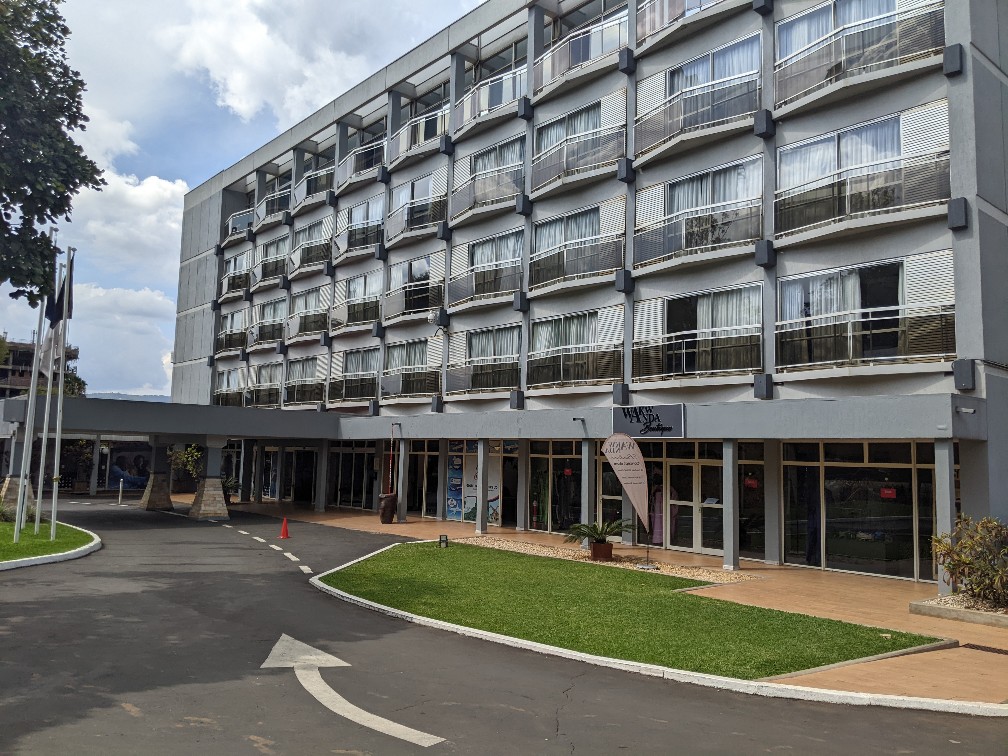
After the museum we drove for about 2 ½ hours to Ruhengeri, which is where our hotel is located. We drove through lots of little towns and lots of farm land. Sinilar to our experience in Madagasgar, trucks struggling up the hills really slowed us down.
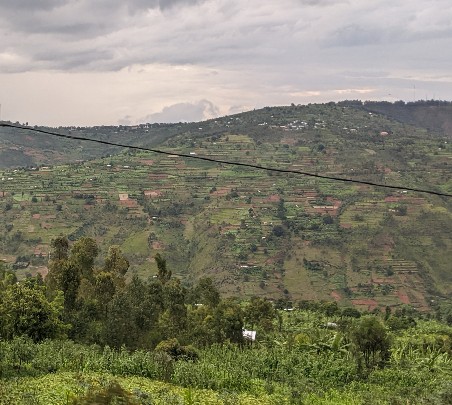
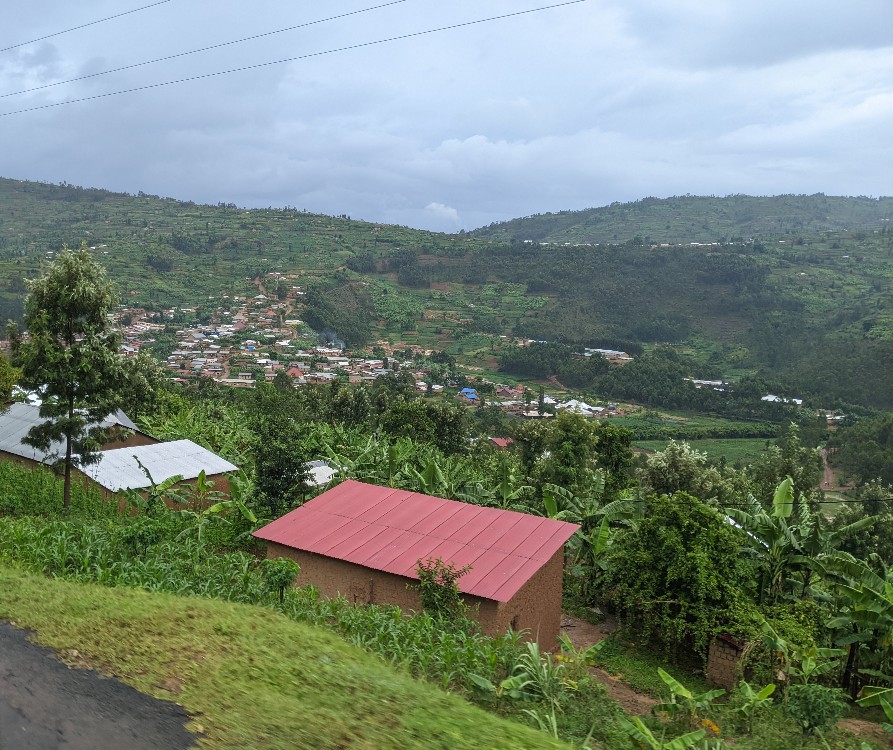
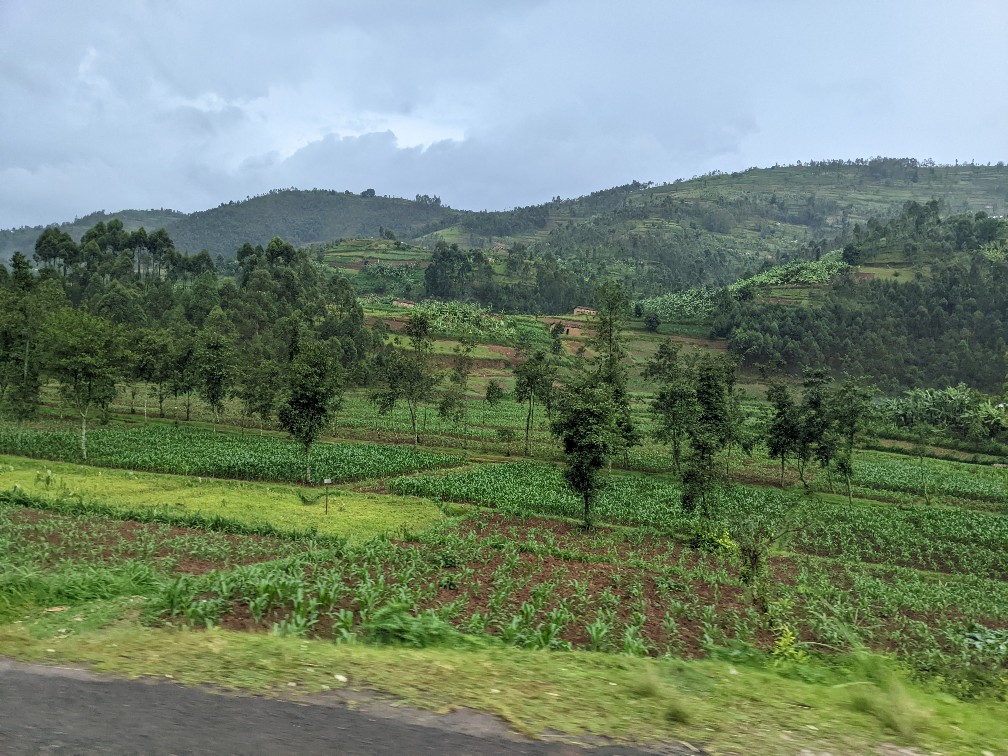
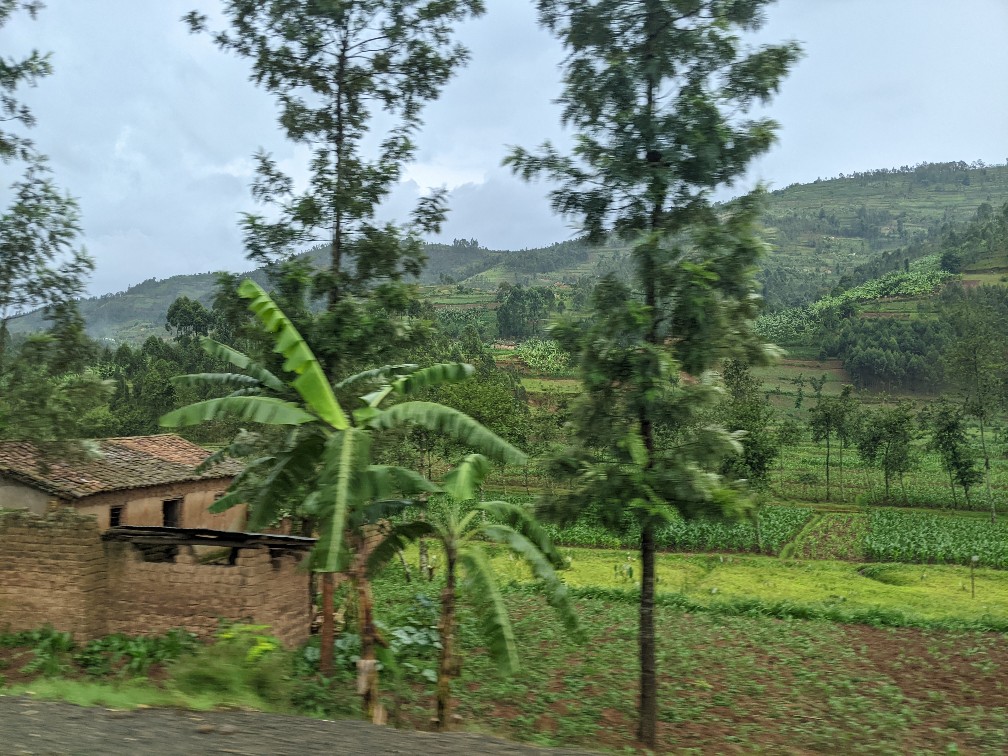
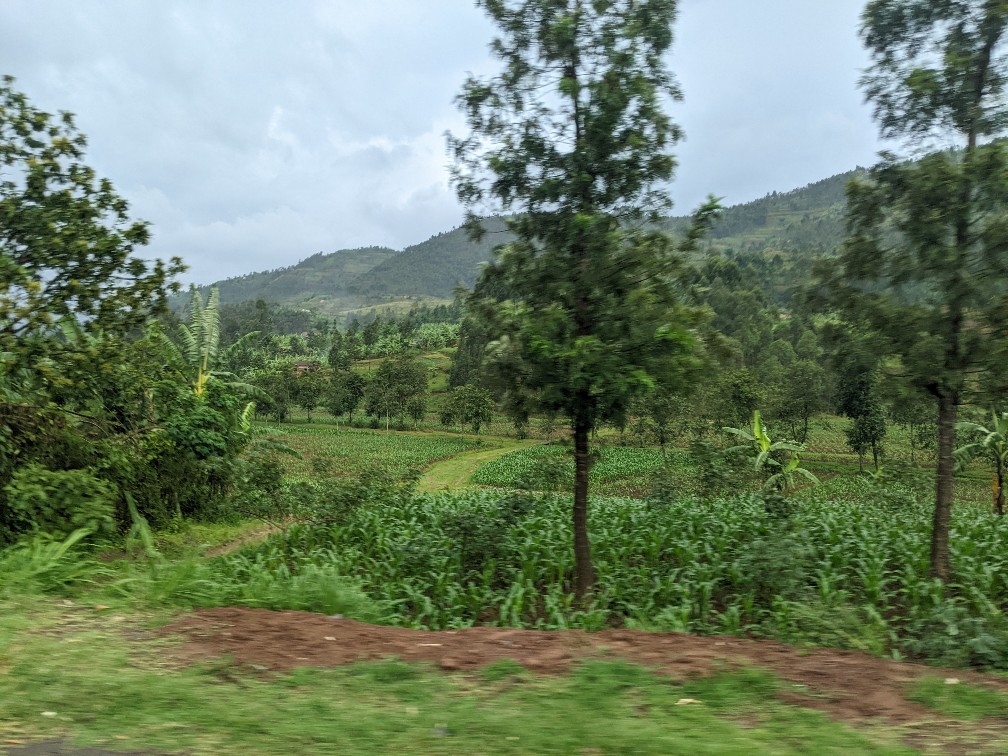
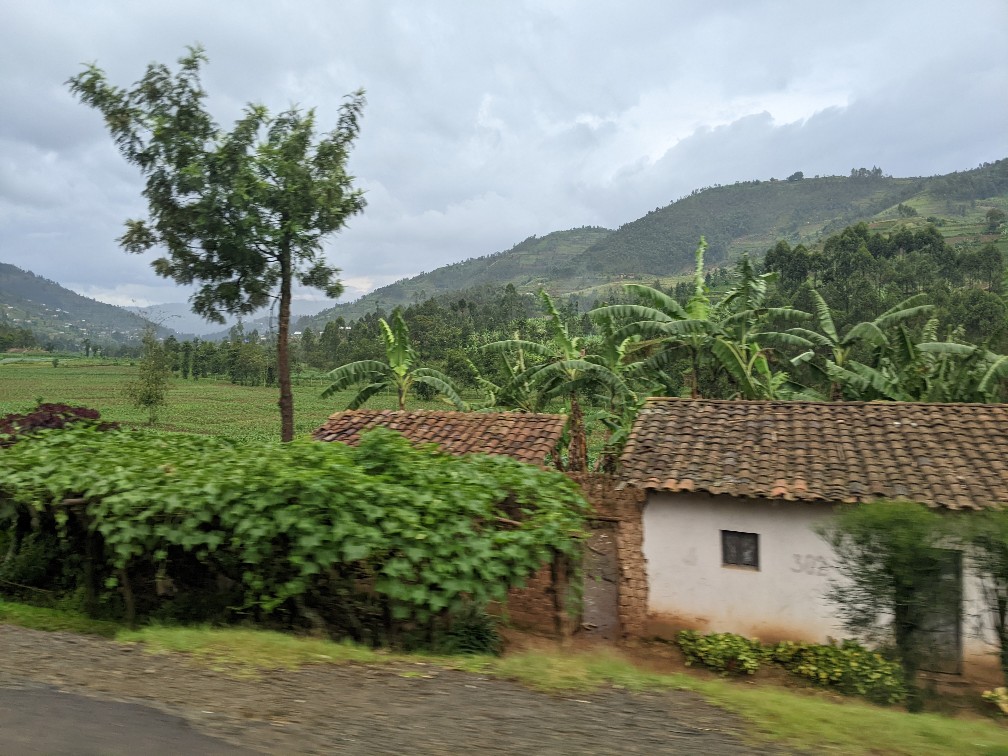
It rained much of the way and was pouring when we arrived. We got checked in and had a lovely dinner. Here are pictures of our hotel.
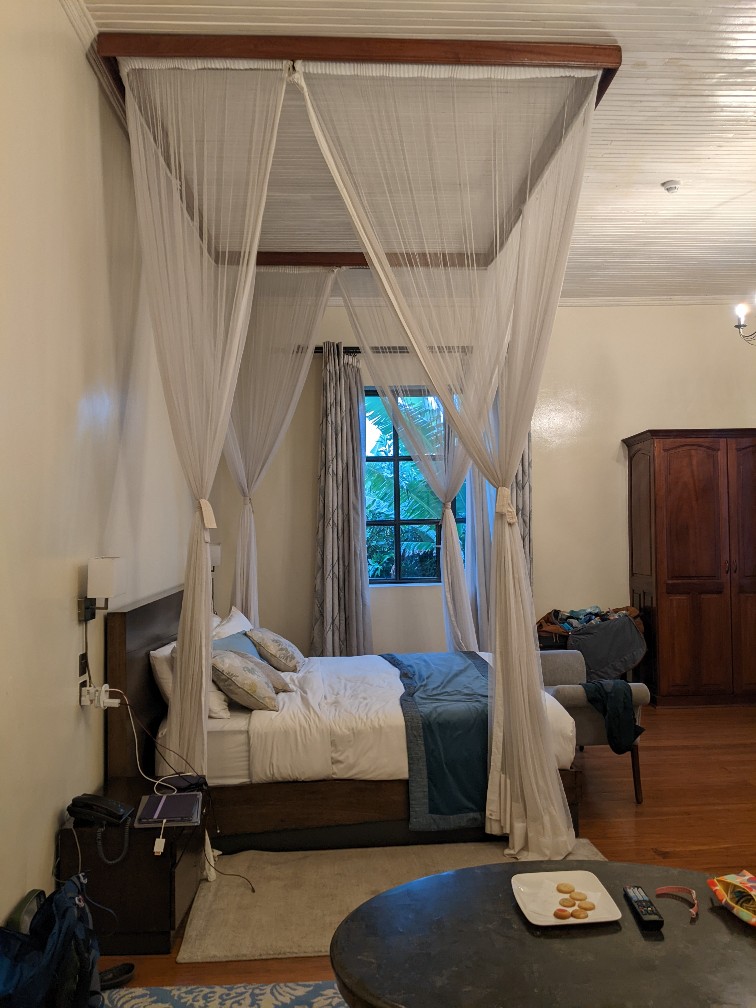
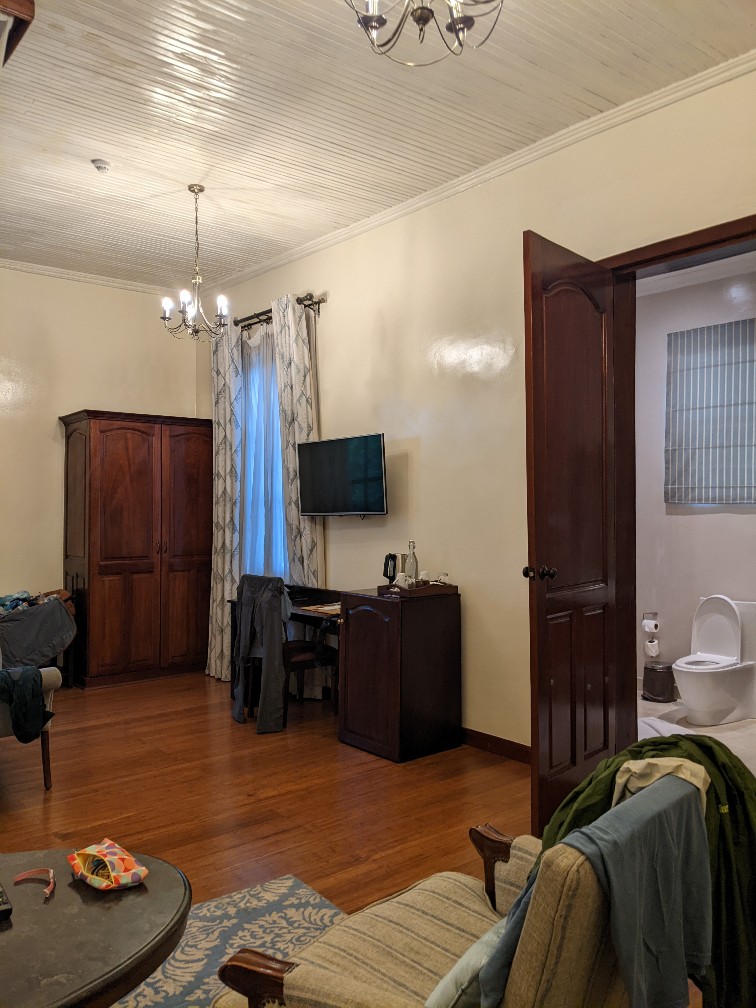
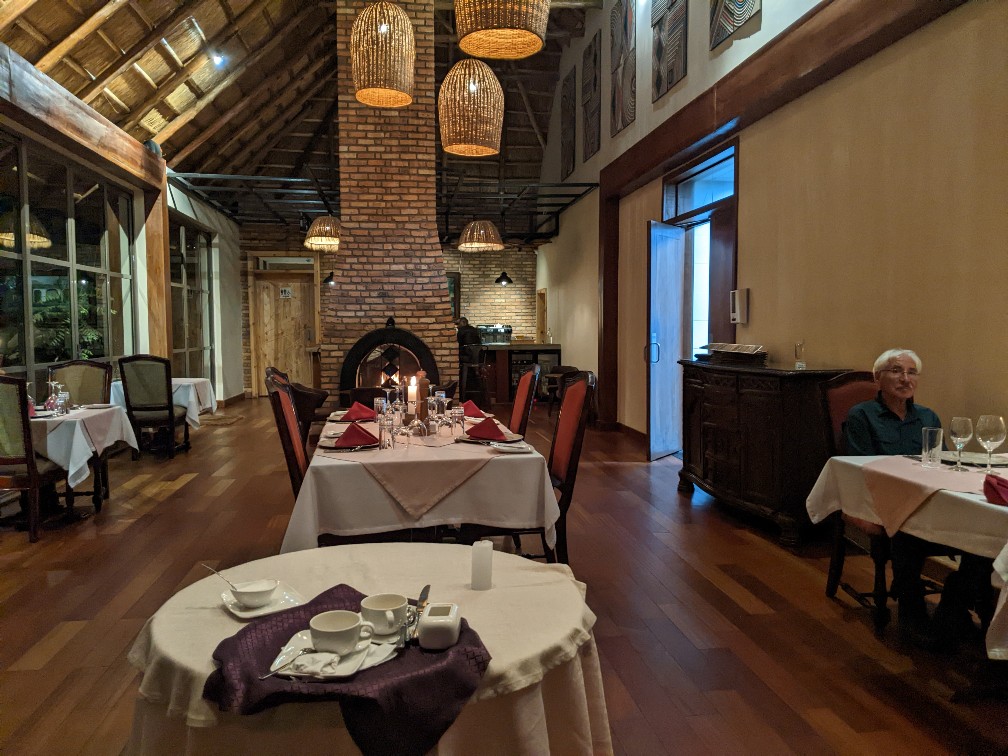
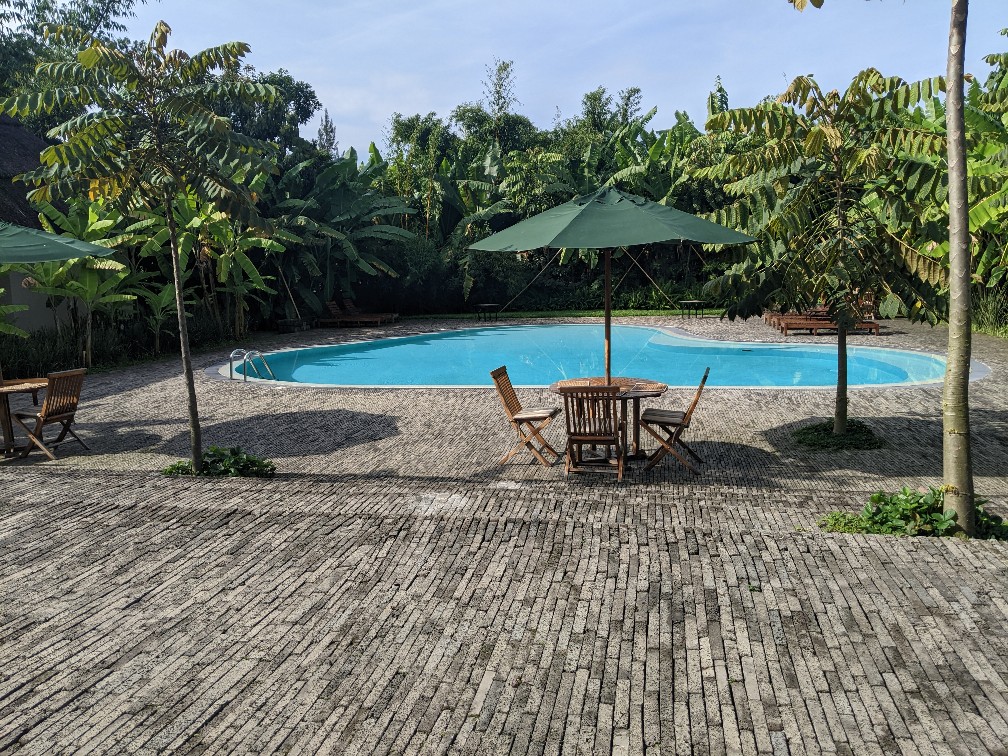
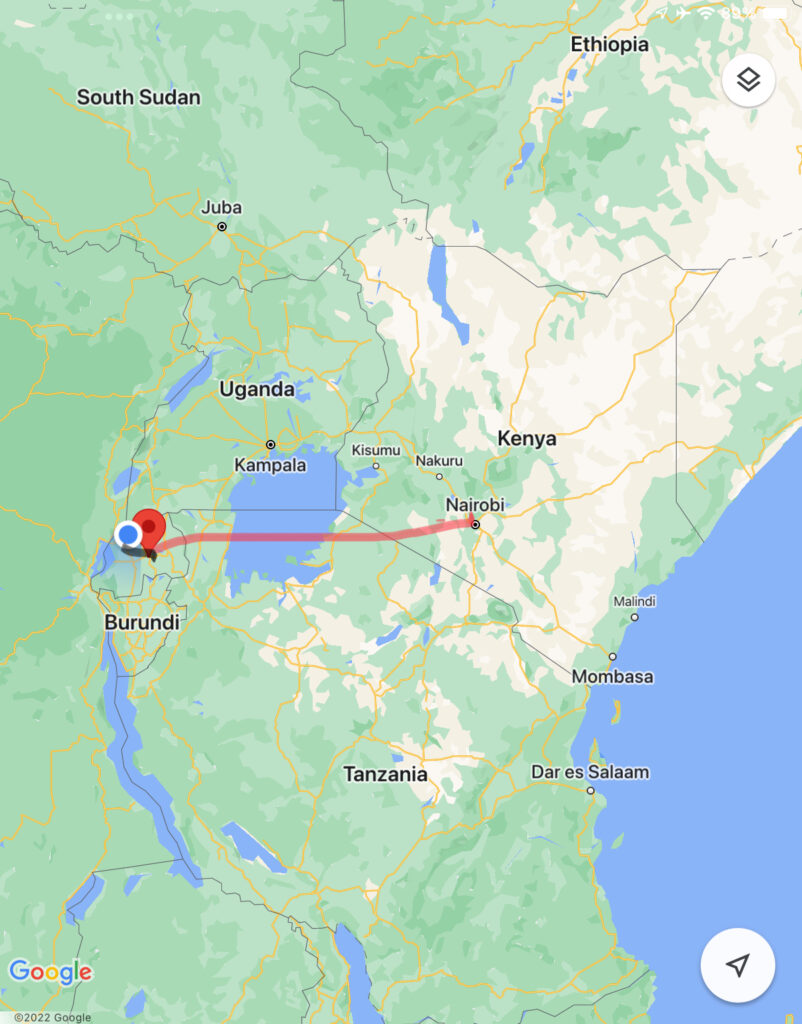
November 4, 2022 Tana, Madagascar to Nairobi, Kenya
It was a quiet morning and nice not to have to get up to get anywhere today. We had lunch at the hotel and then Josef picked us up to take us to the airport. Clearing customs and security was a piece of cake.
Overall, Madagascar was a little disturbing. It is the poorest country we have ever been in and probably the poorest one we will ever see. Between the limited water, short food supplies and governmental corruption, it is hard to see how the folks living here retain a positive outlook. That said, the Malagasy people generally seem happy. Nevertheless, we got the sense that they were frustrated about their inability to drive change.
It is hard to get around because the roads are really terrible. But the hassle is worth it because the lemurs are magnificent and the culture is rich. Mandrare River Camp was by far our favorite. It had a great blend ofcomraderie, culture and wildlife. At both Mandrare and Eulophiella we felt like we got to know the people, which makes the difference between a good experience and an excellent experience.
Overall we are happy that we came to Madagascar and recommend it to others. We are hopeful that the lives of the Malagasy people get easier as the country modernizes, they get more access to education and healthcare and are able to initiate steps to western ideals that fit their environment, especially when it comes to governmental corruption.
The 3 1/2 hour flight from Tana to Nairobi was uneventful and we were met at the gate by a representative from our travel company who helped us thru immigration and guided us out to our Kenyan guide and driver. This was made easy as all spoke very good English. They told us that English and Swahili are official languages of Kenya. There are 43 tribes in Kenya, each with their own language, so the country has a total of 45 official languages. The population of the country is 55 million and there are about 5 million people living in Nairobi.
It was a very short ride to our hotel. The security in Nairobi is intense. Our car was inspected before we could pull into the hotel and then our luggage and carry ons were scanned at the door and we needed to walk through a metal detector — shades of Egypt a few years ago. We got checked in and had a late dinner at the outdoor restaurant.
